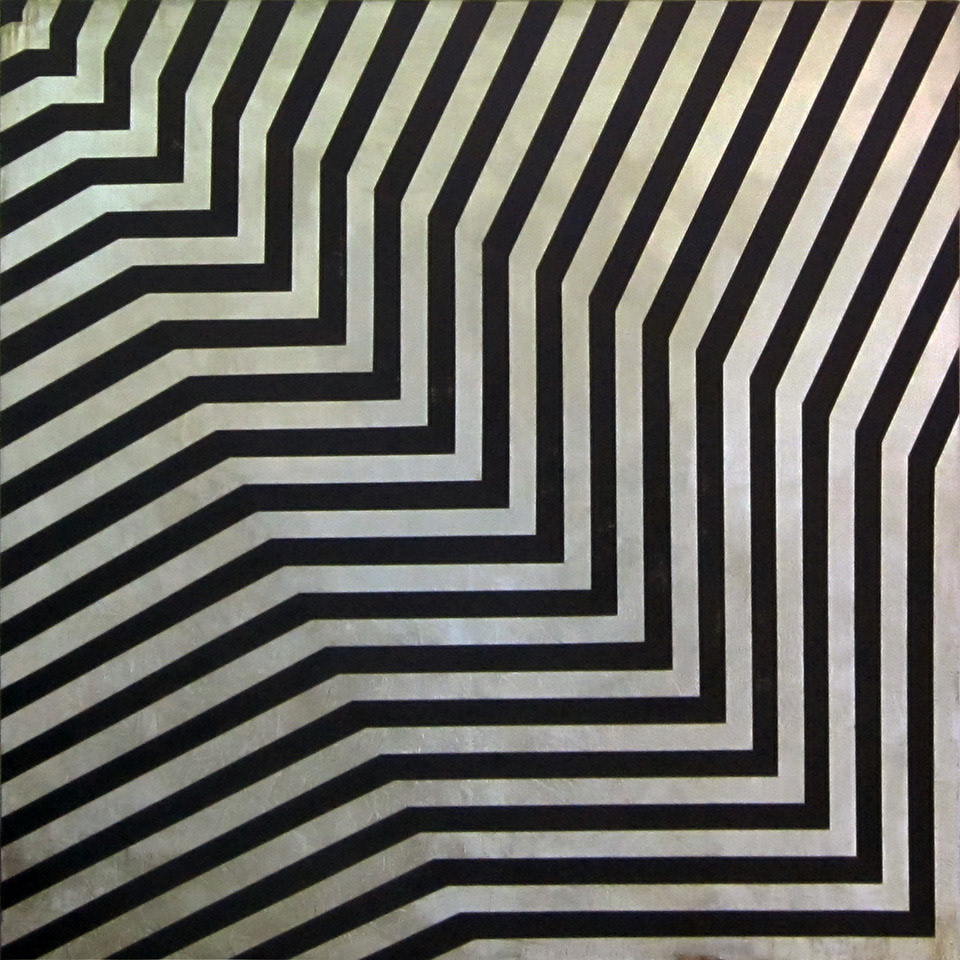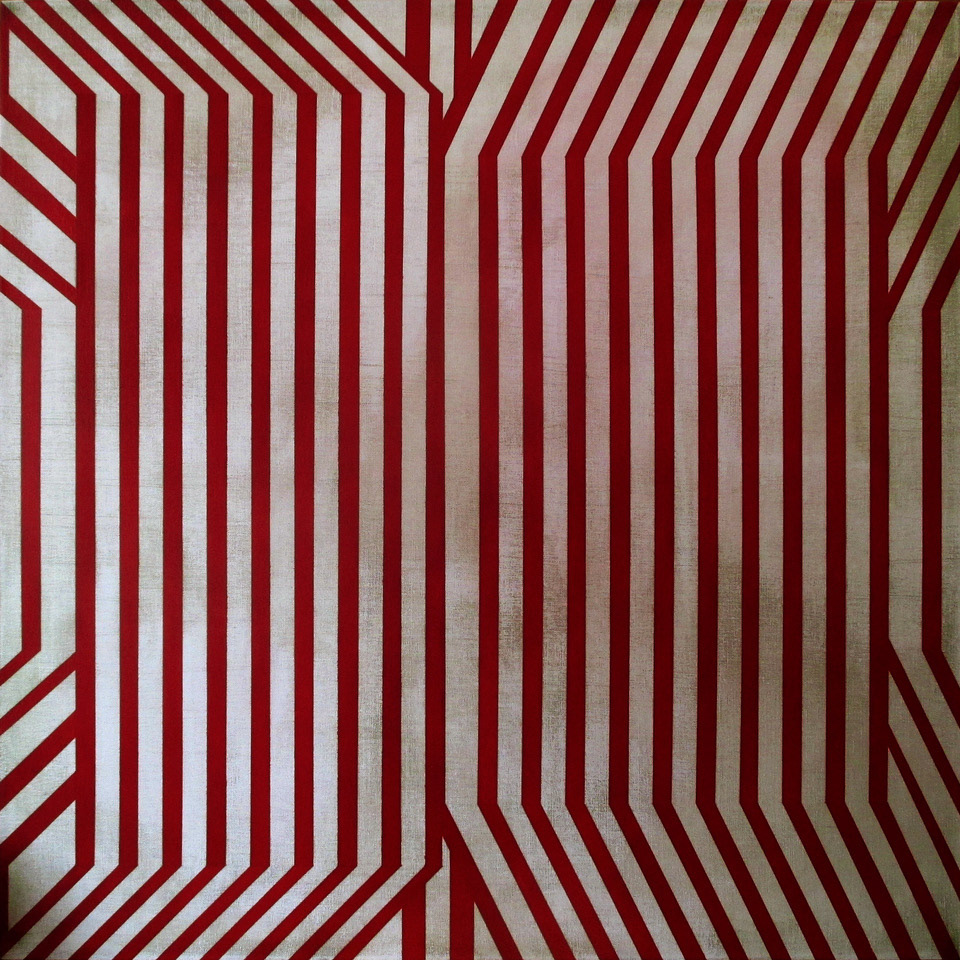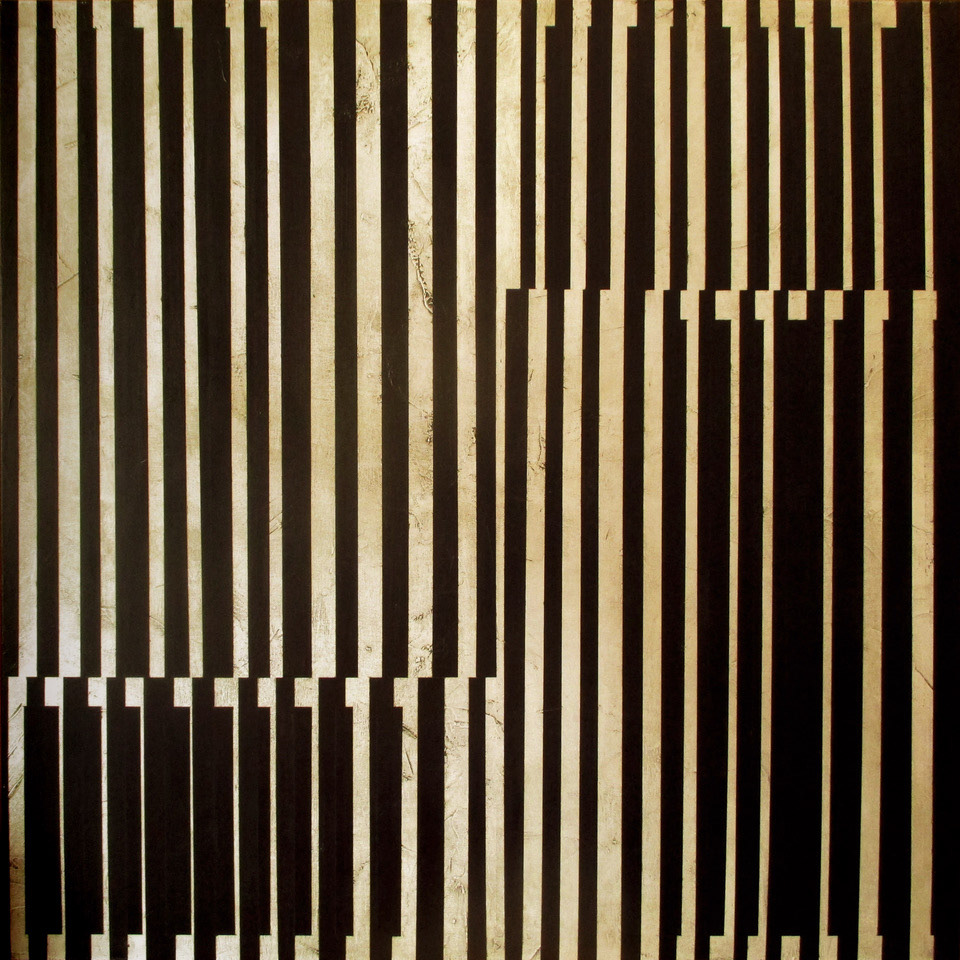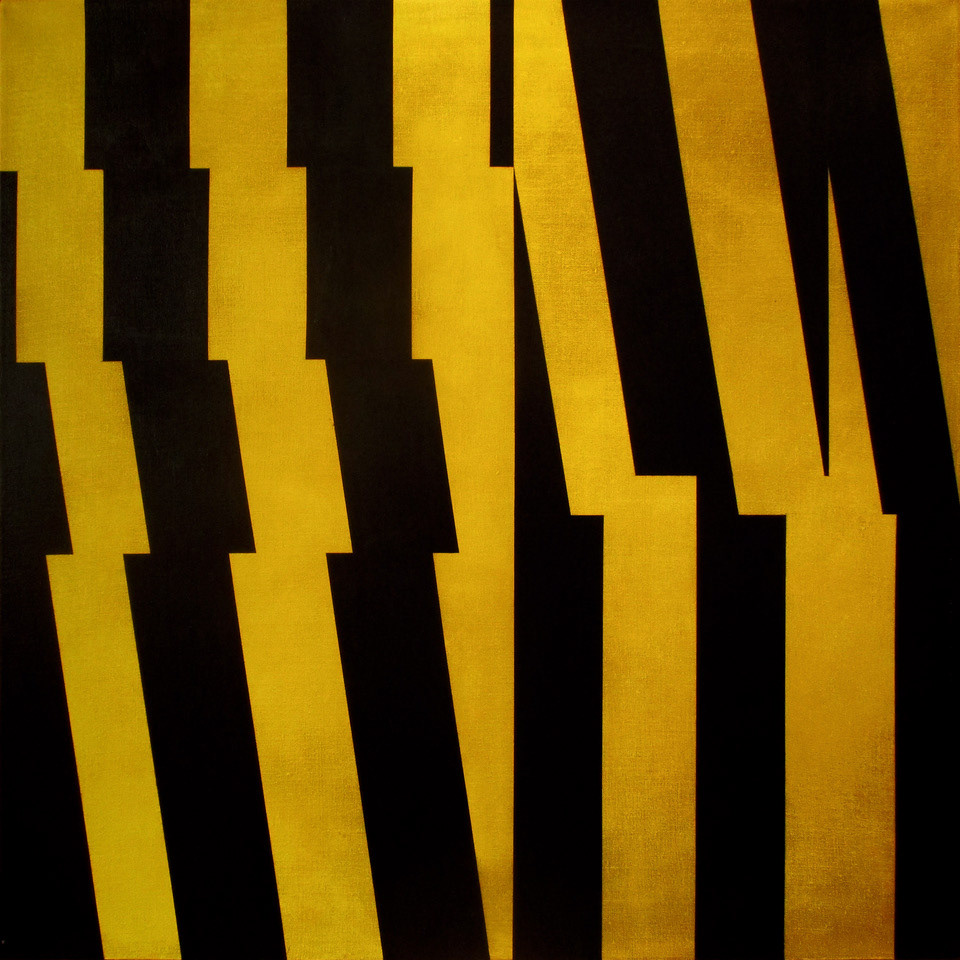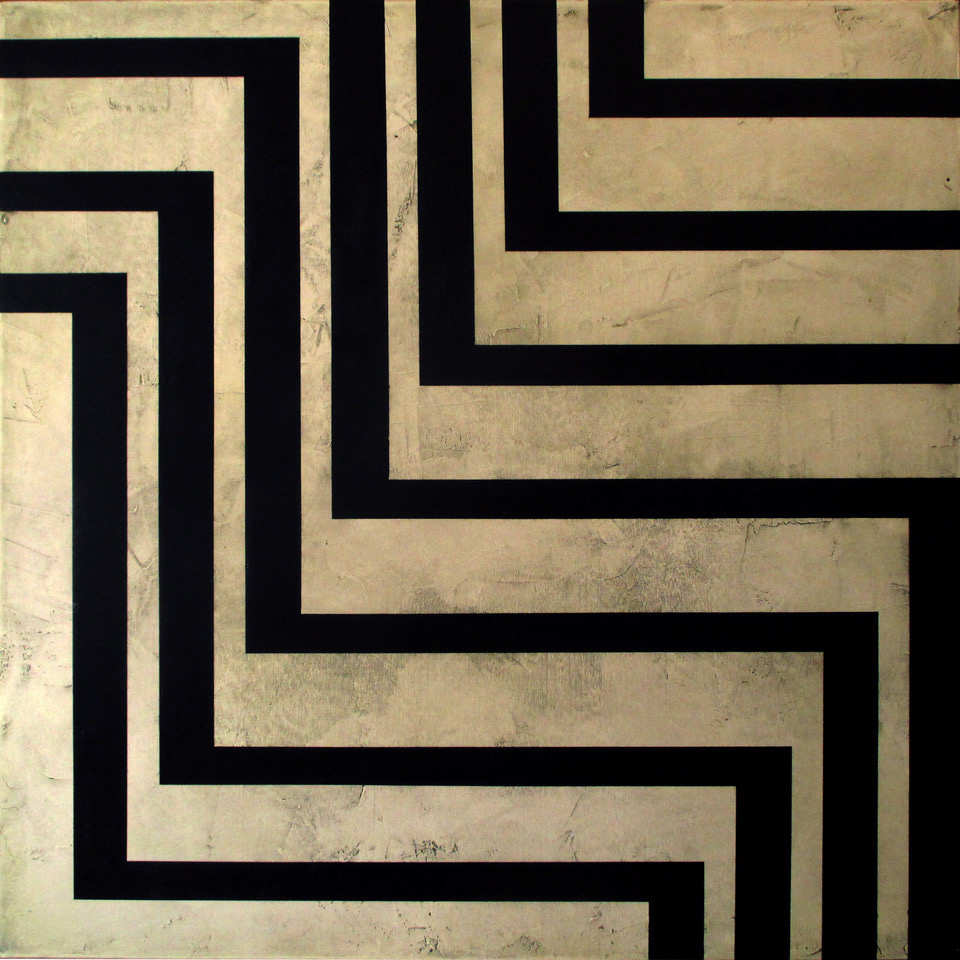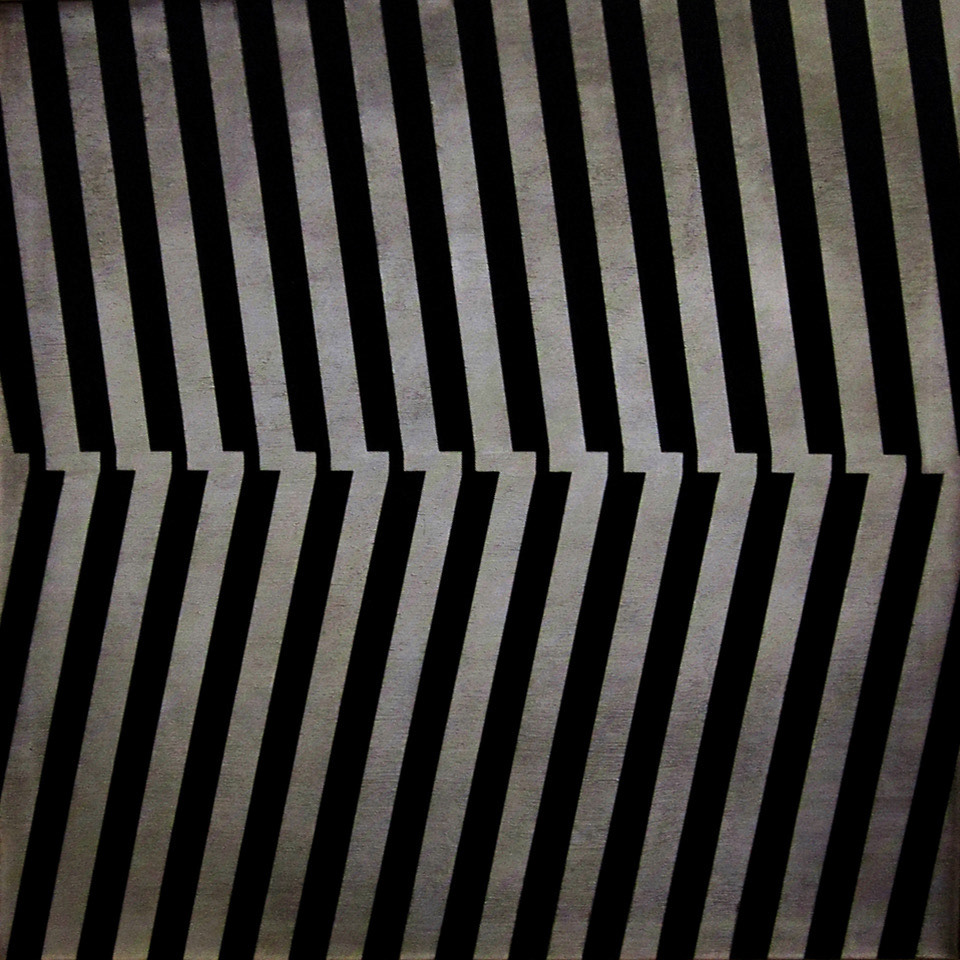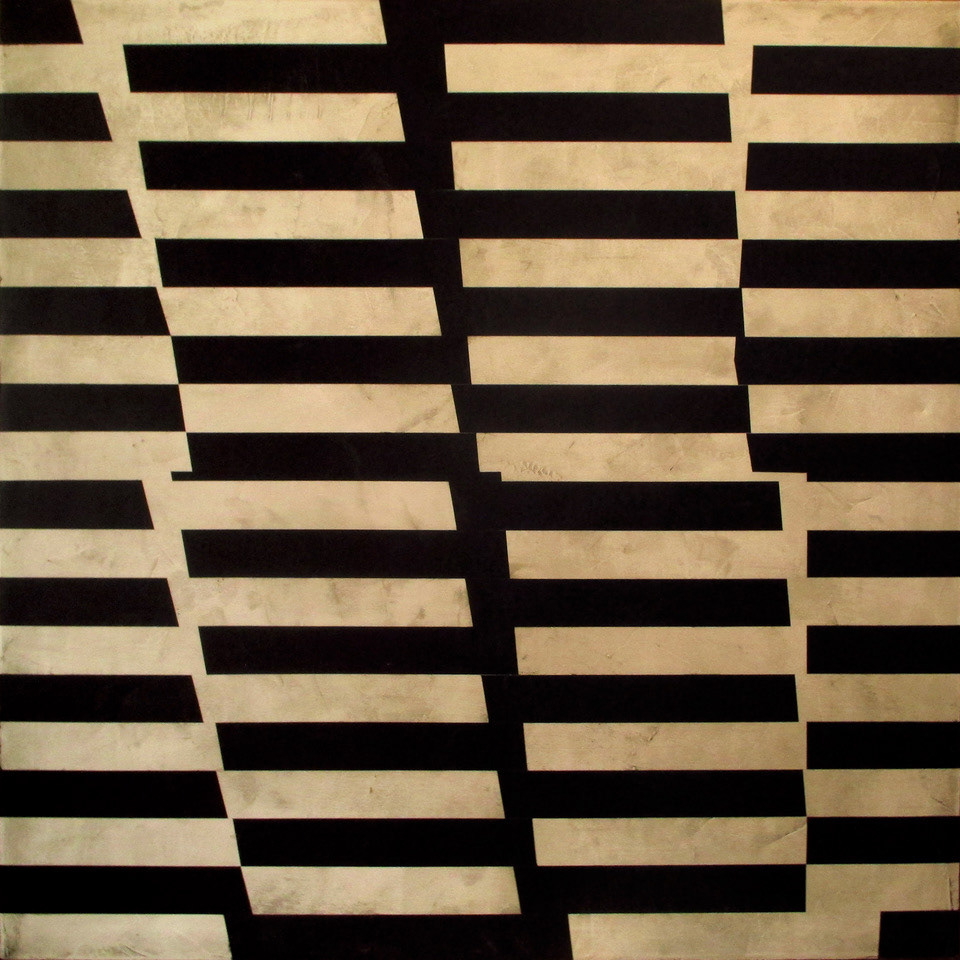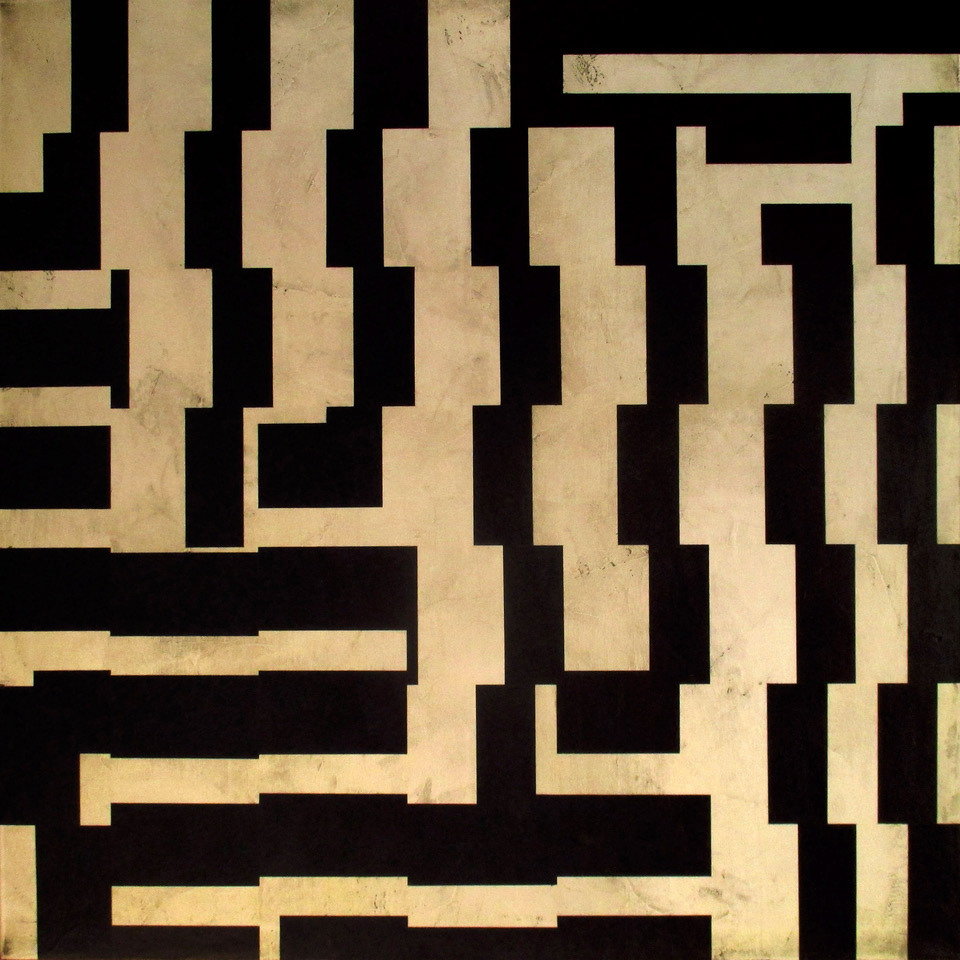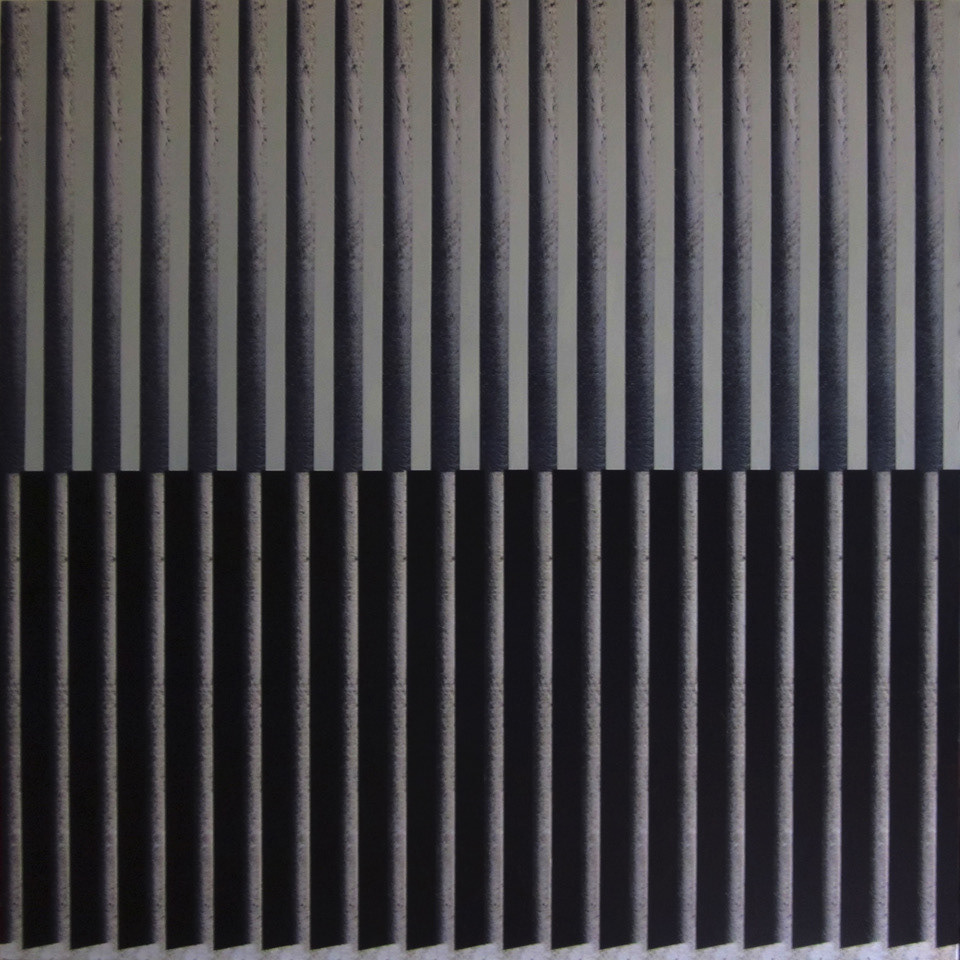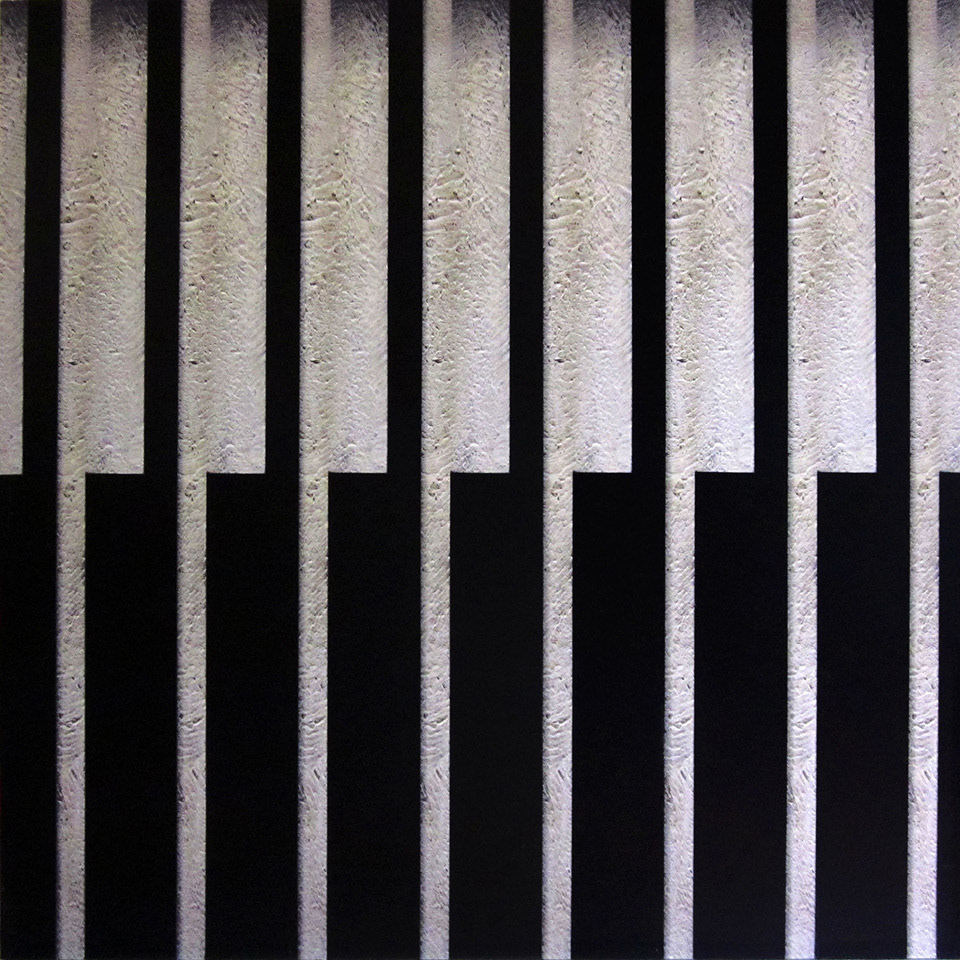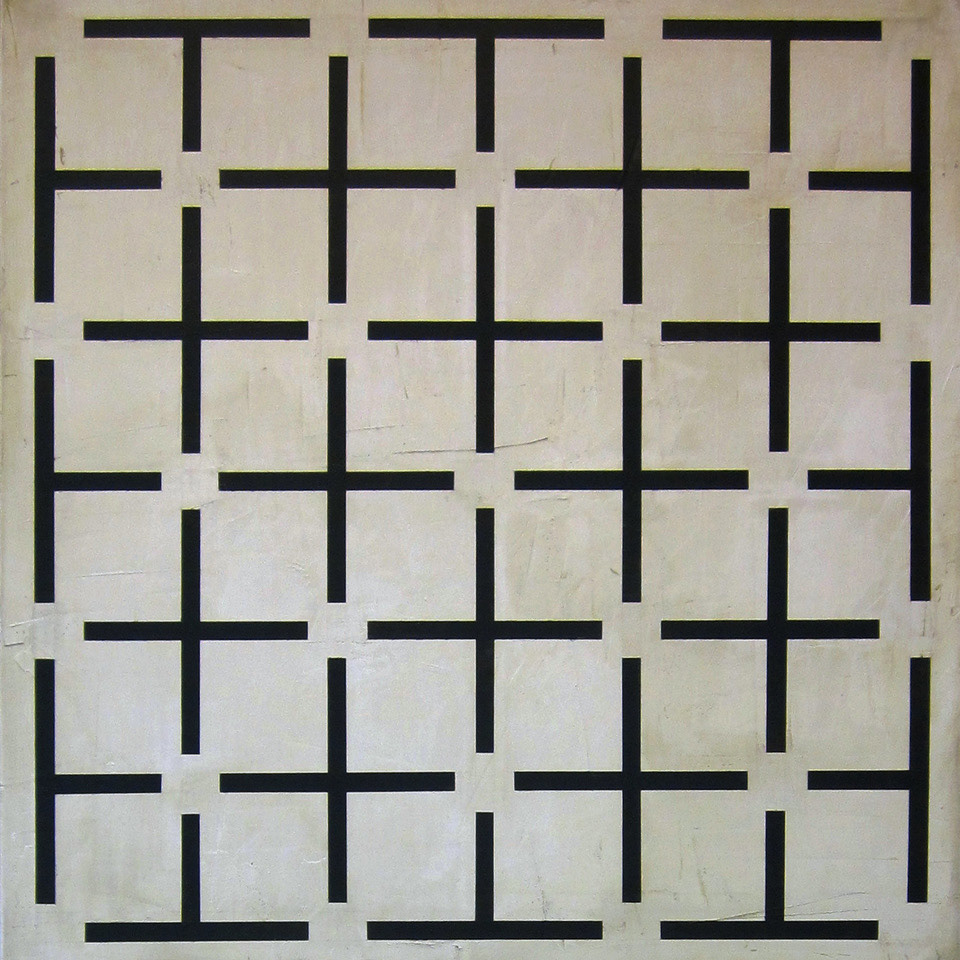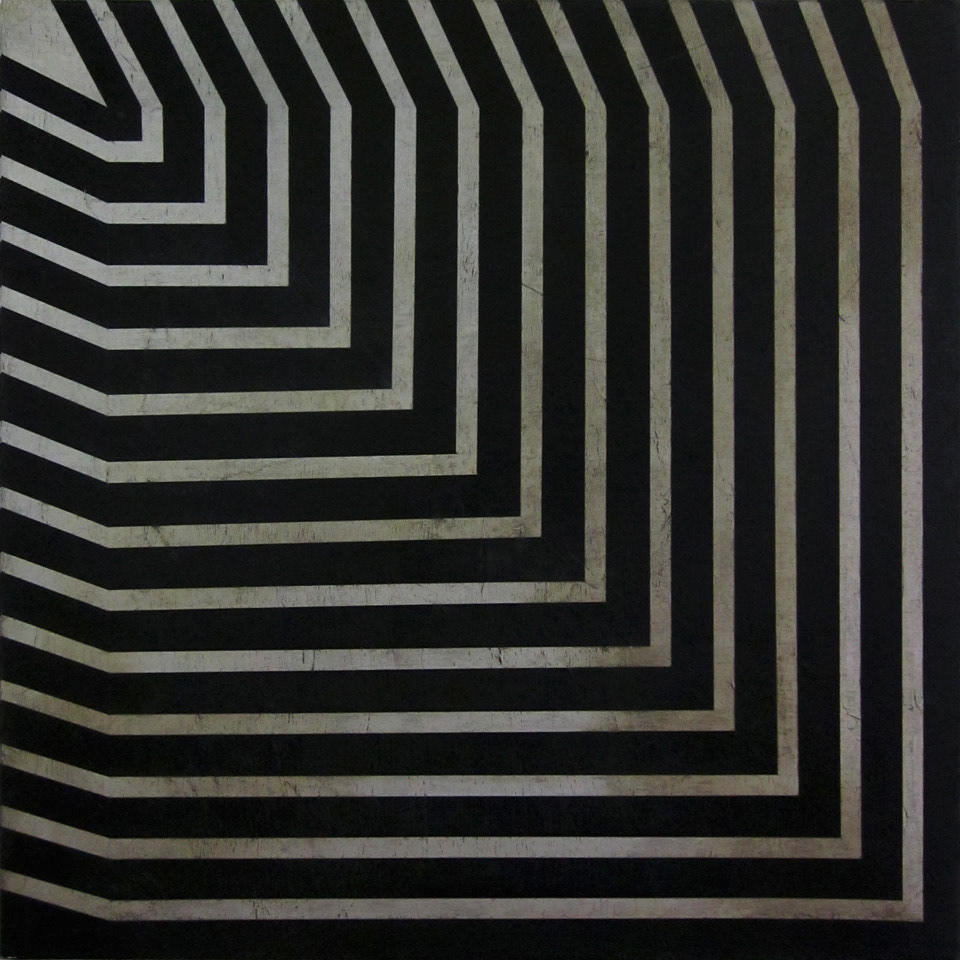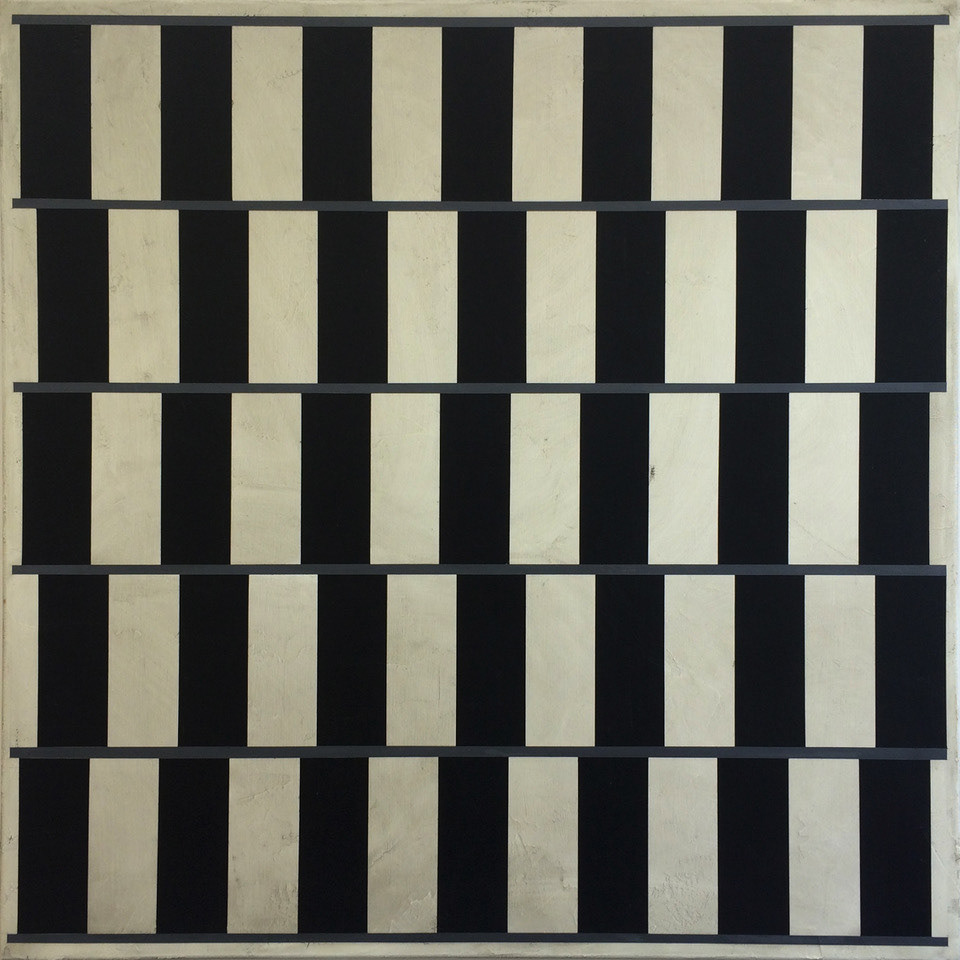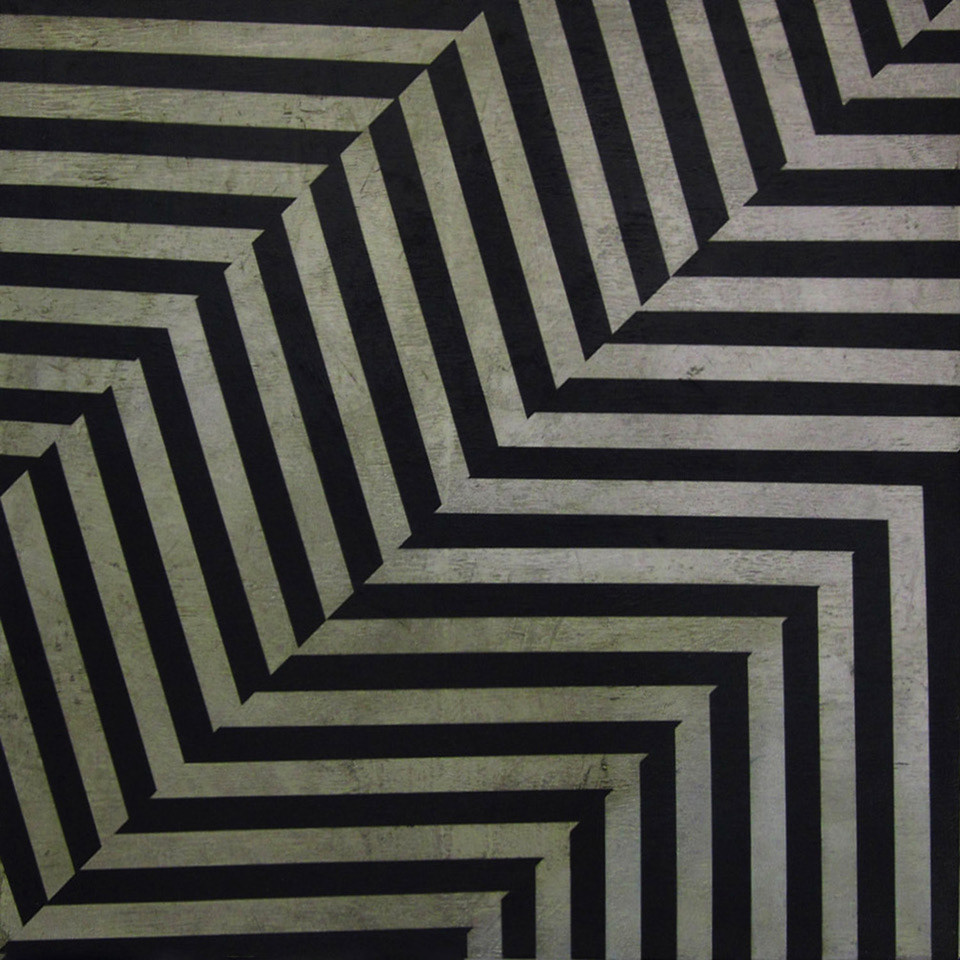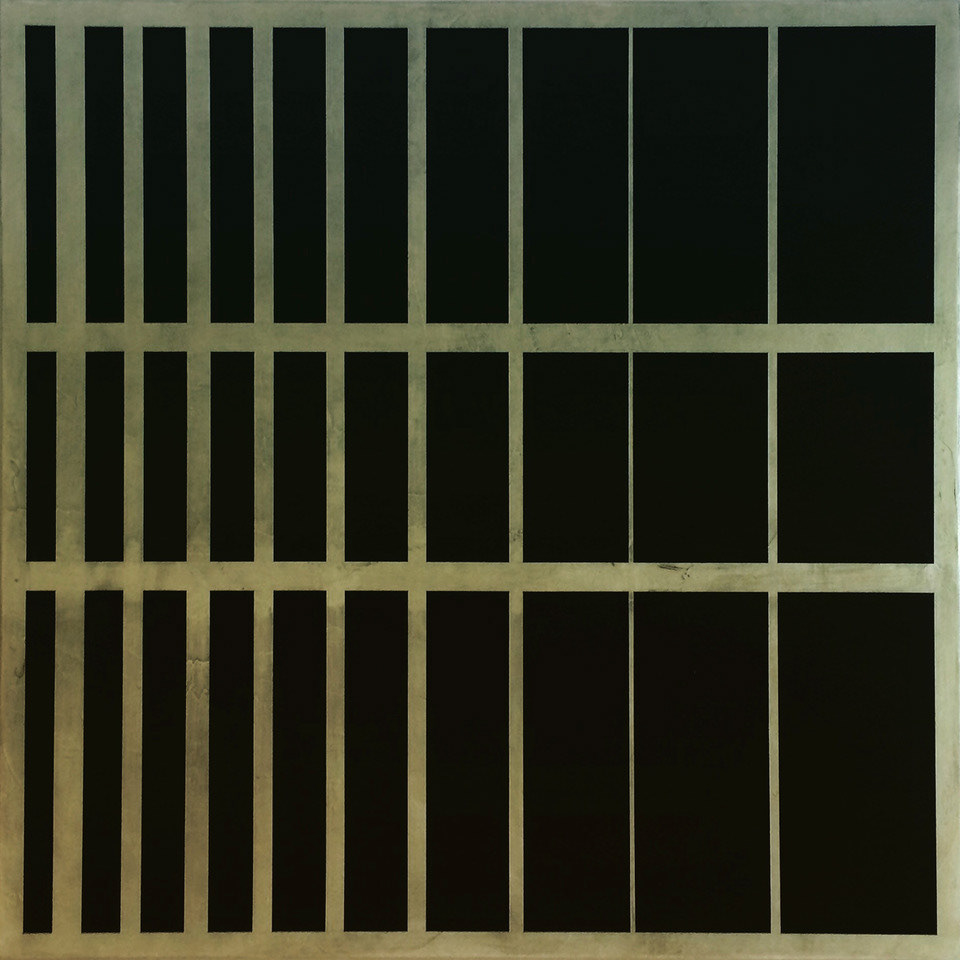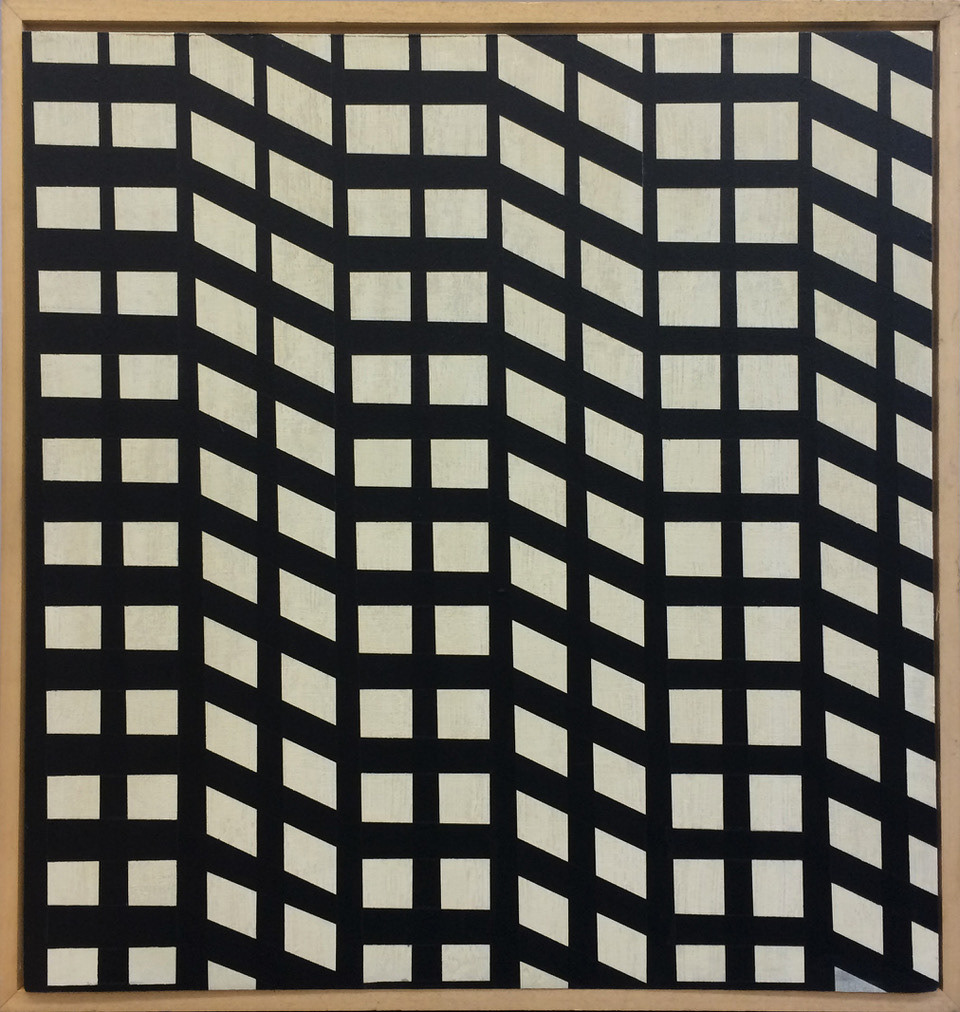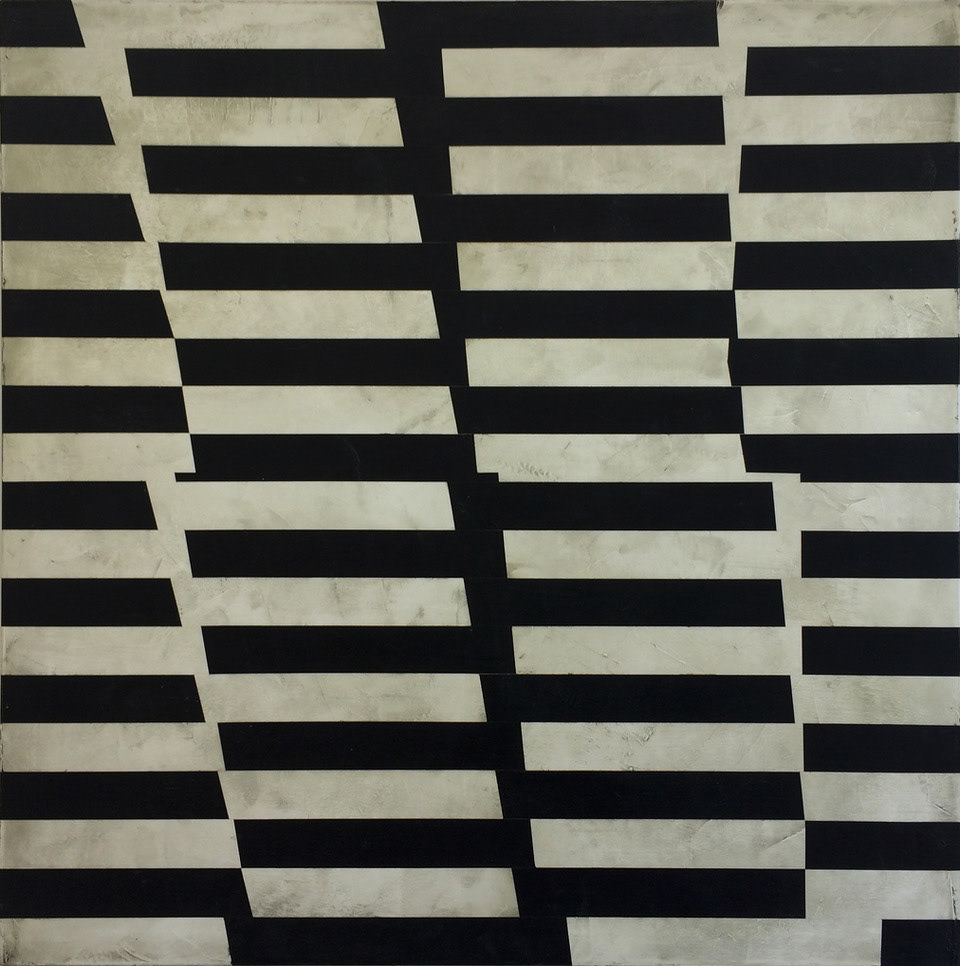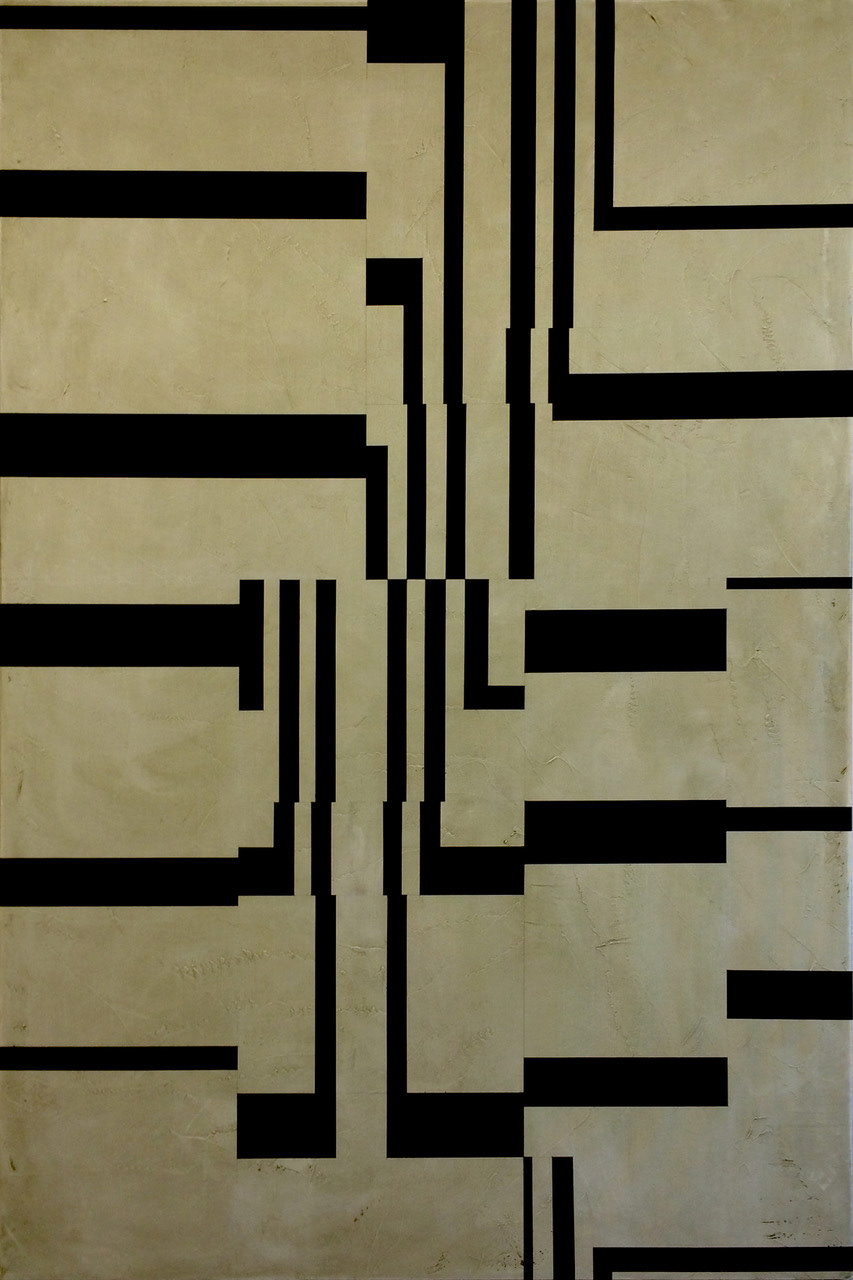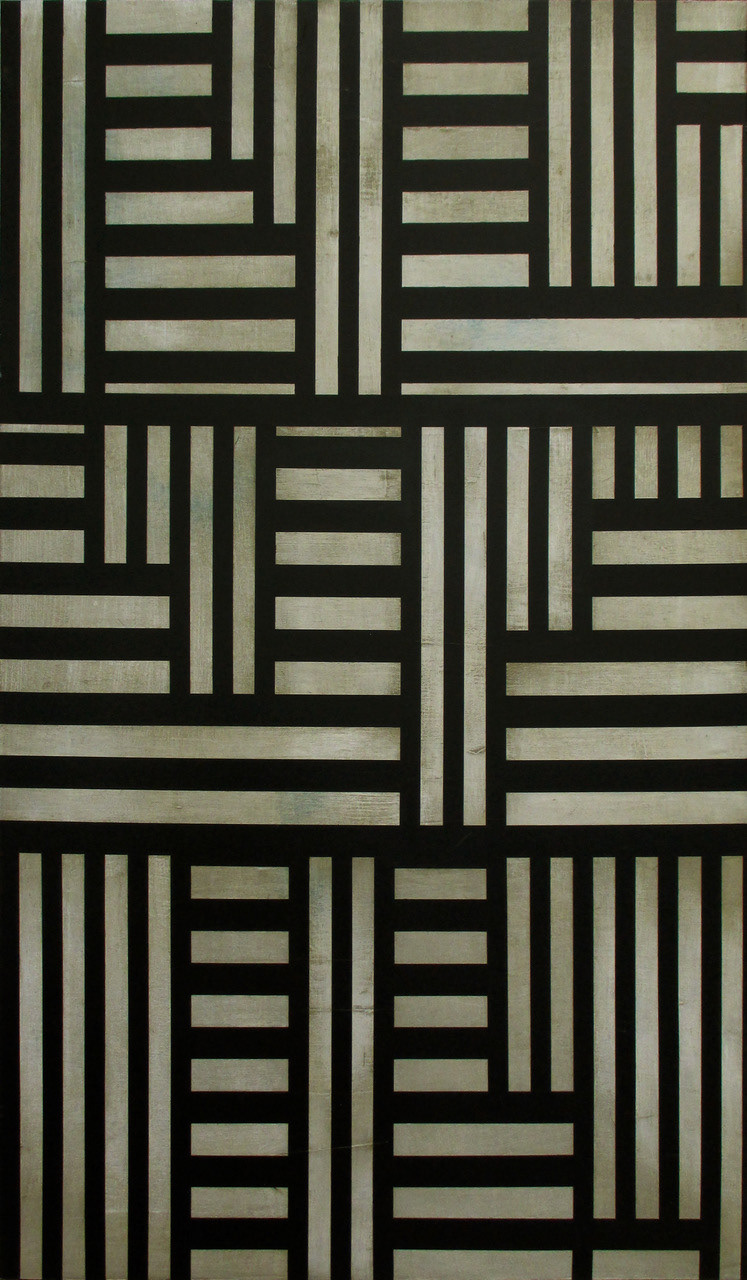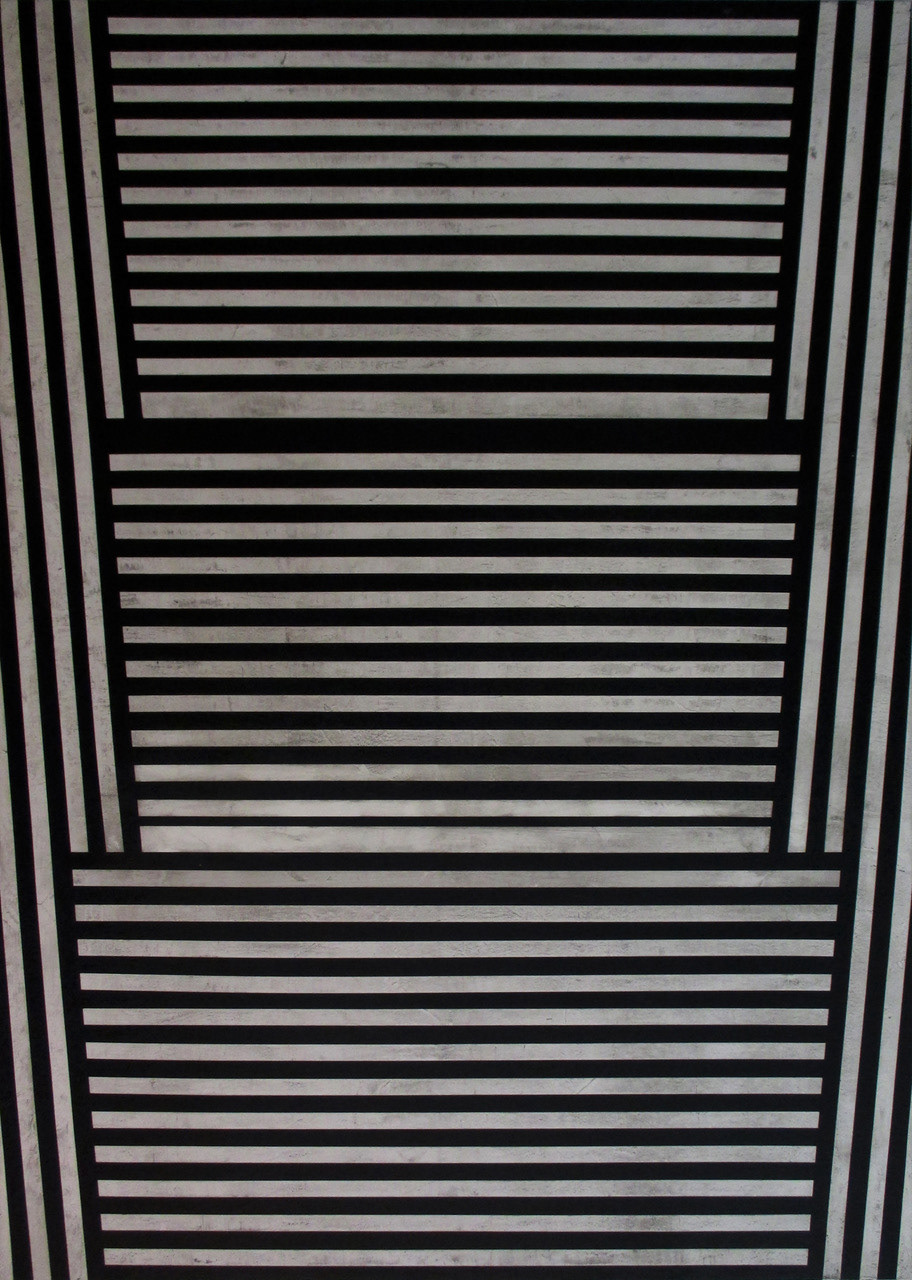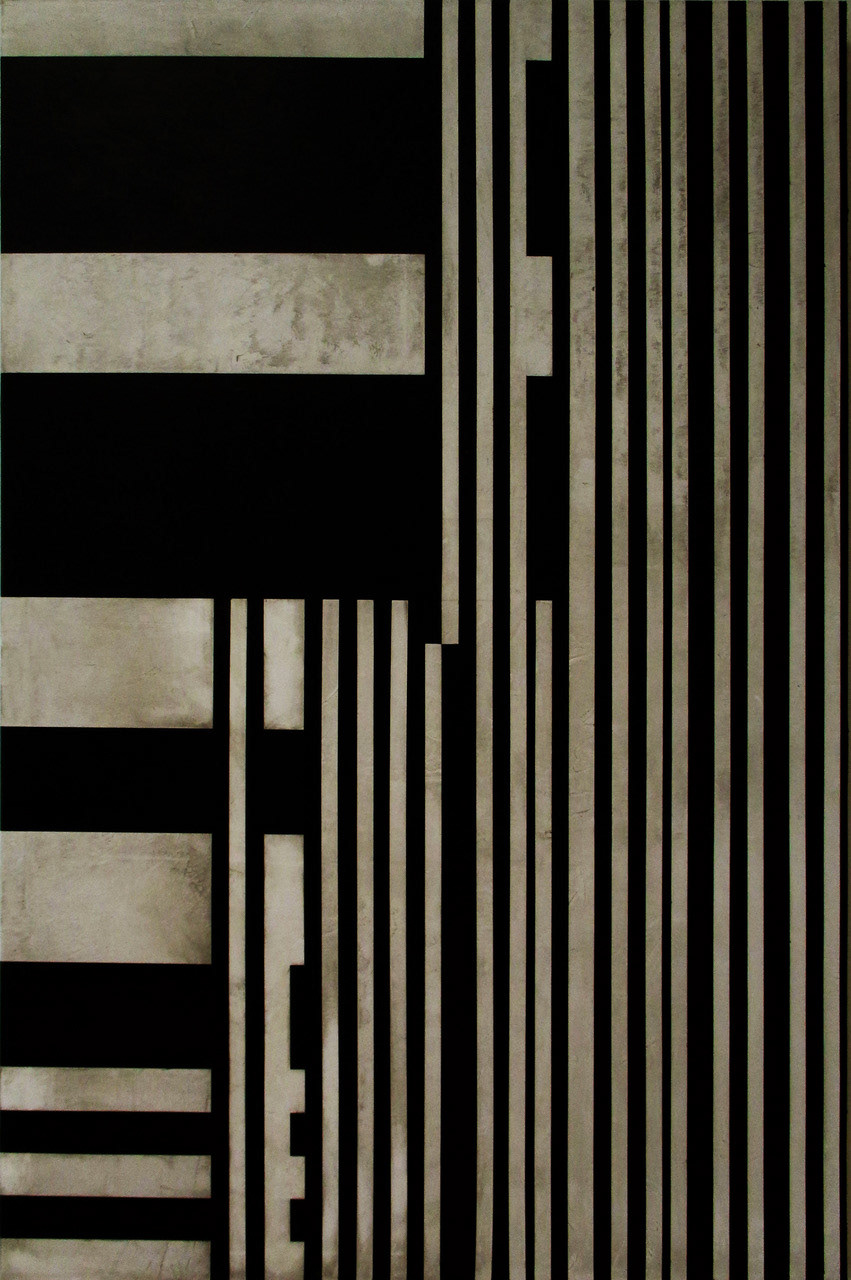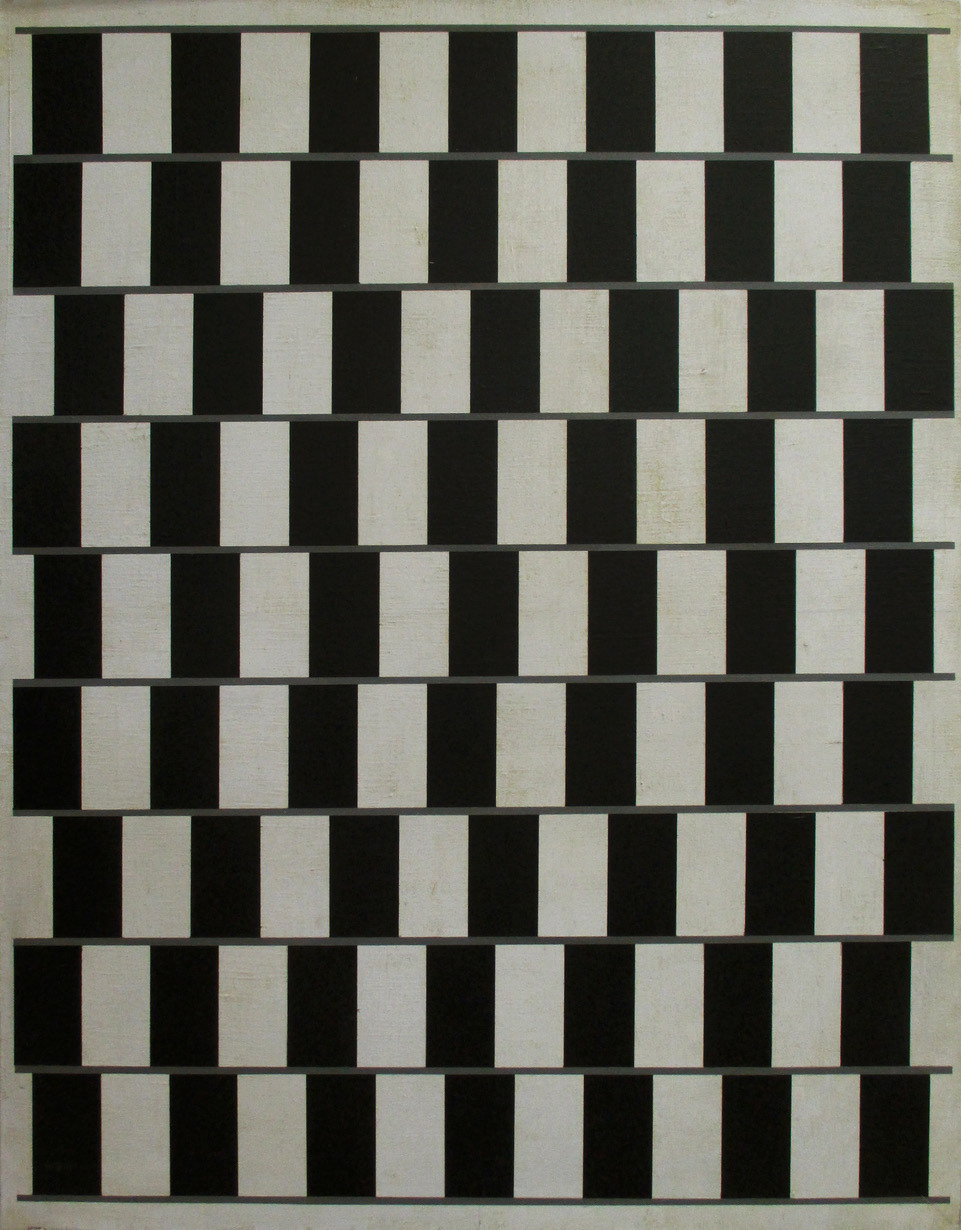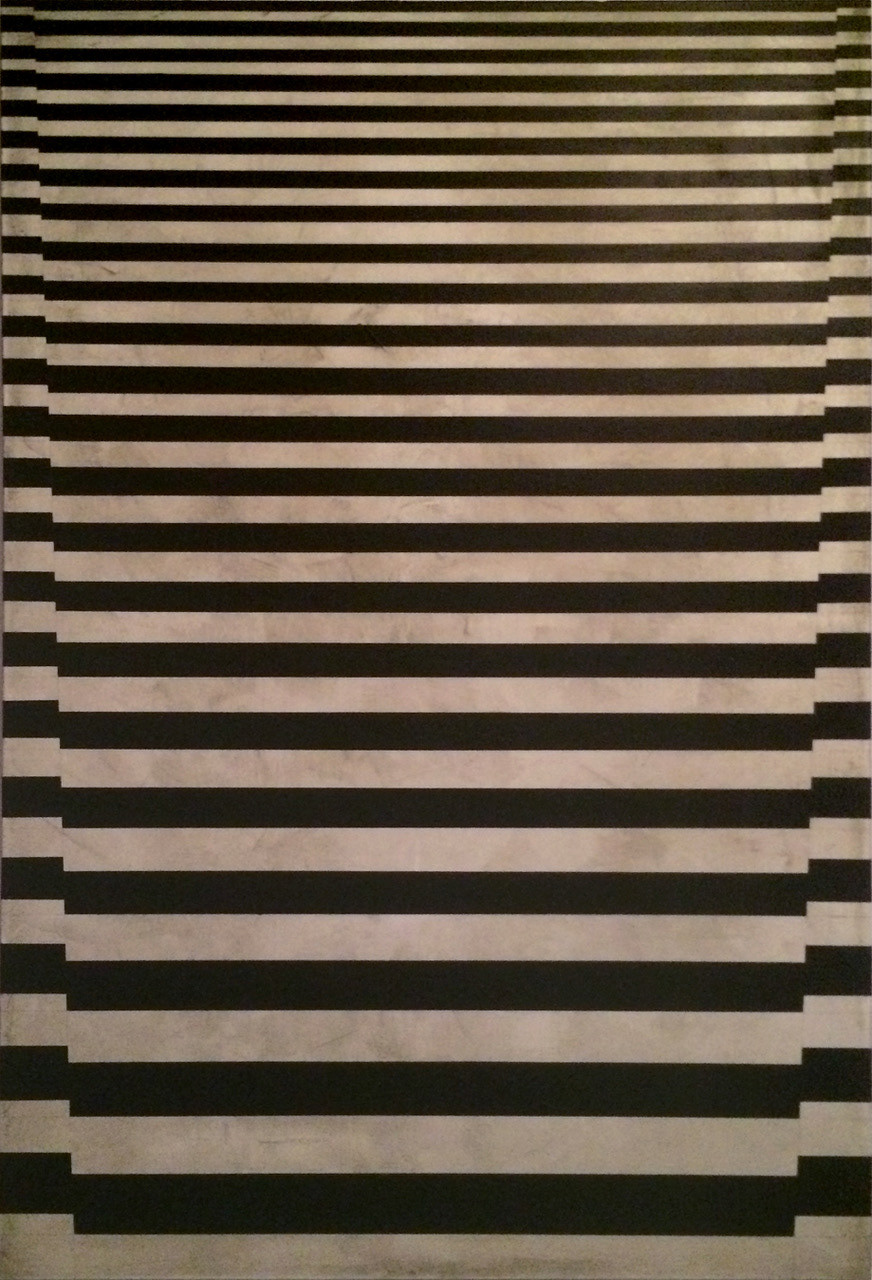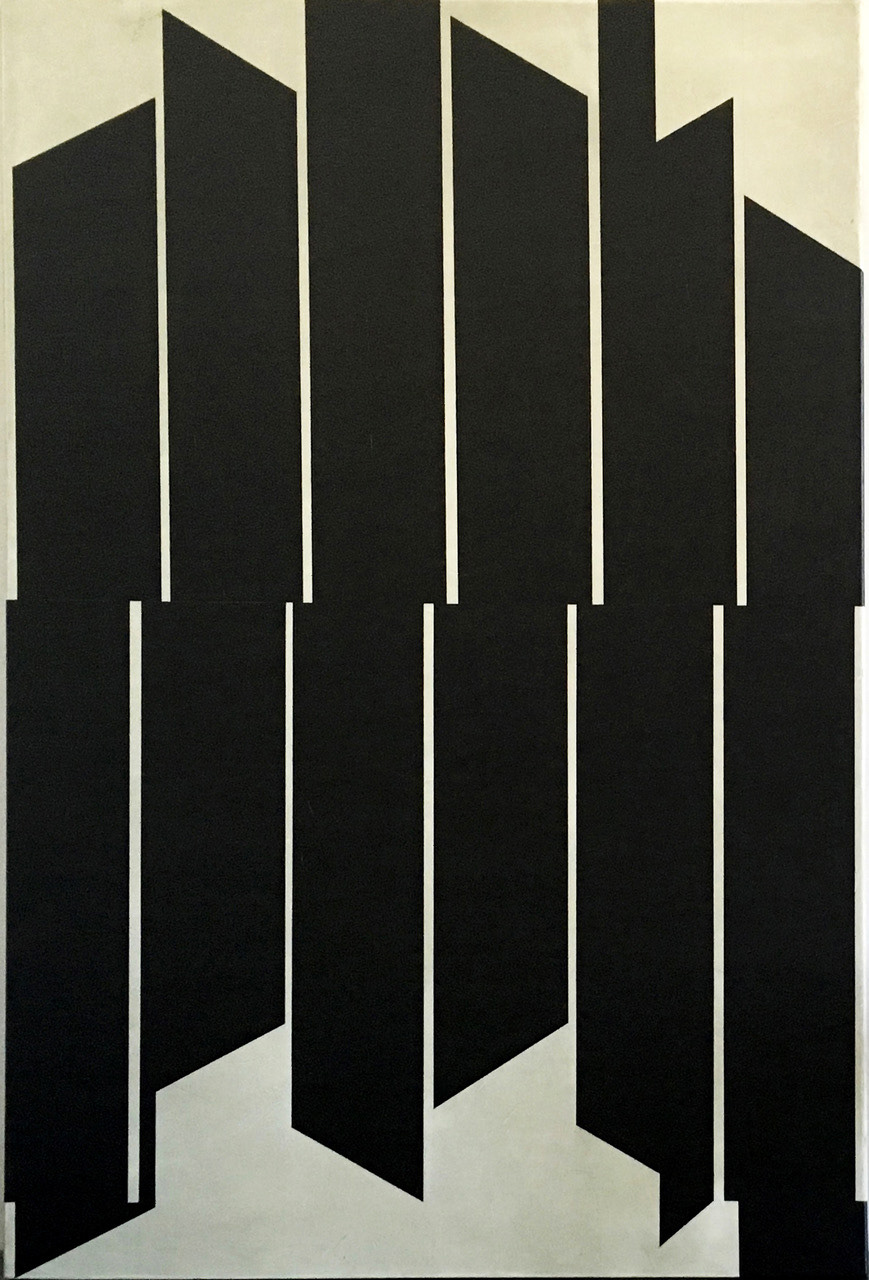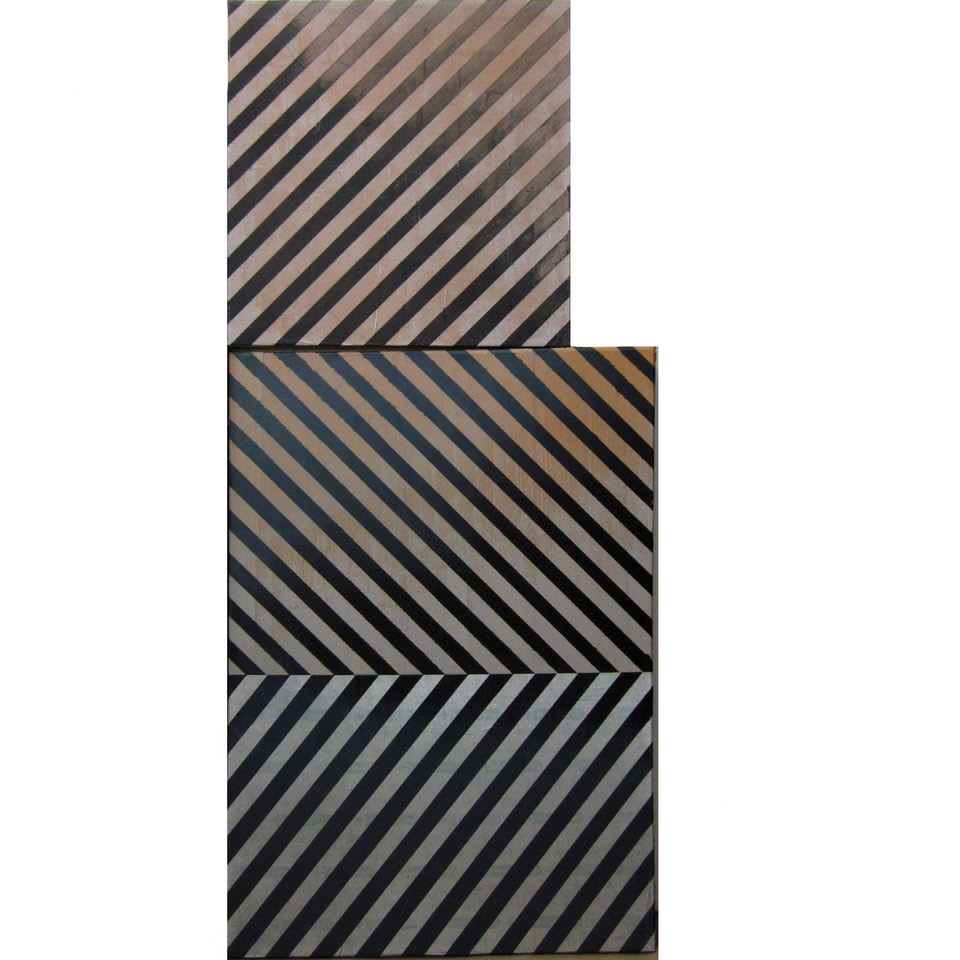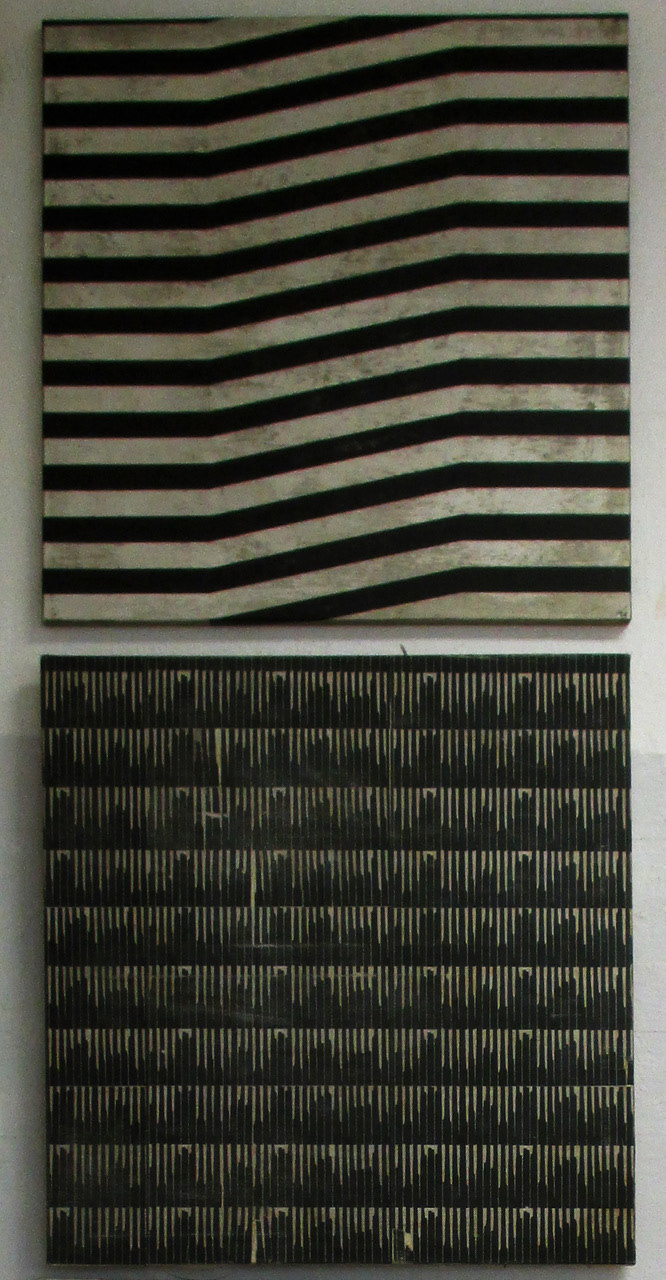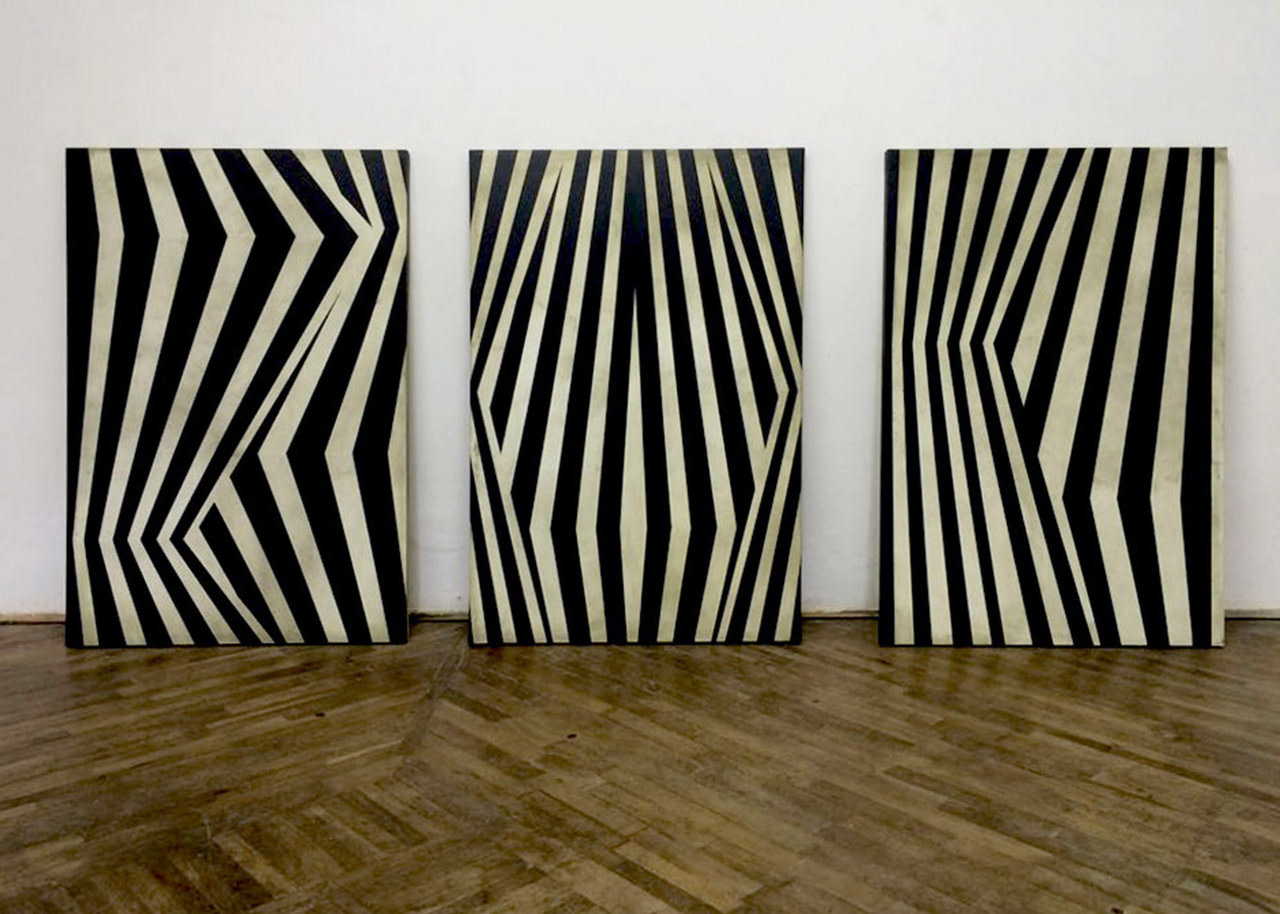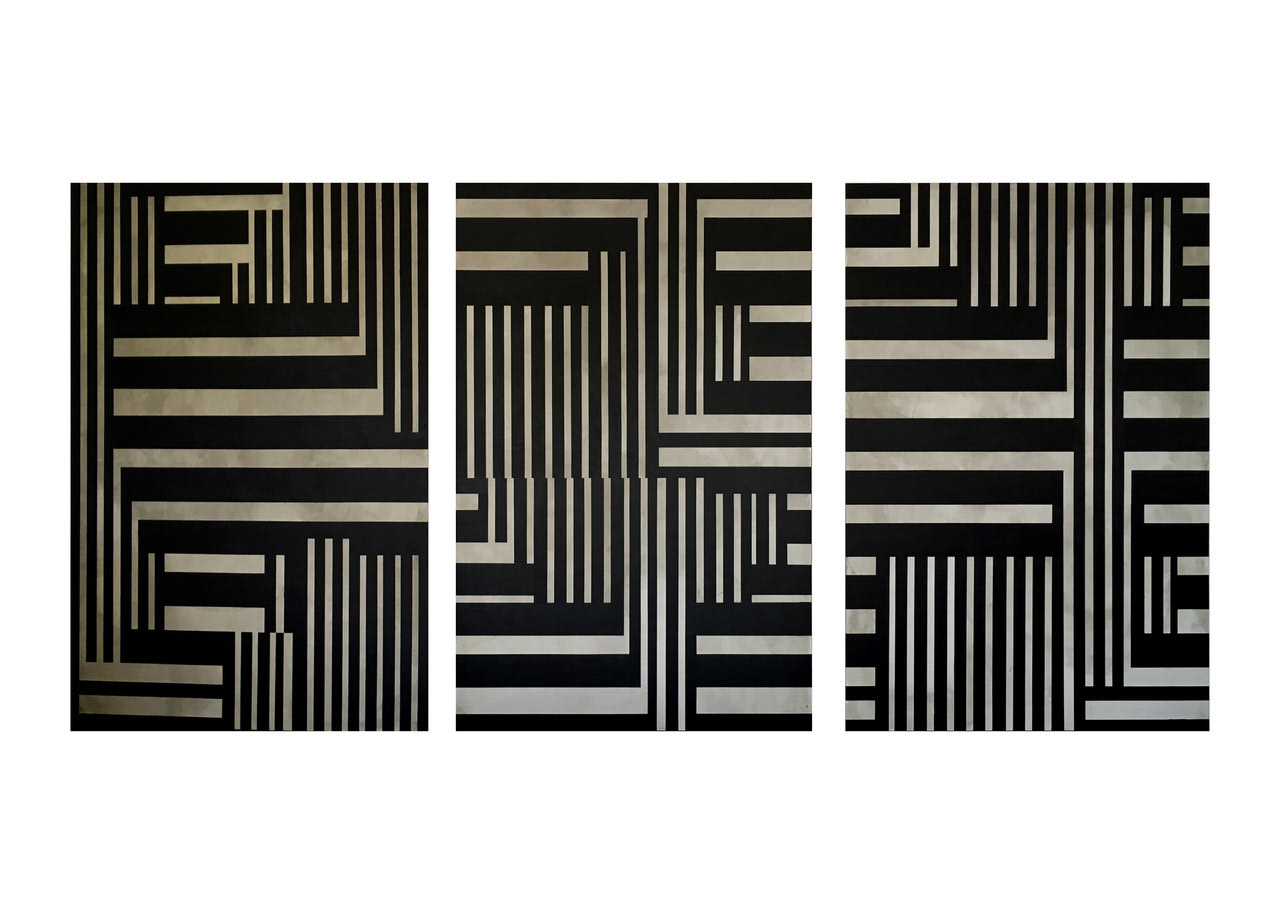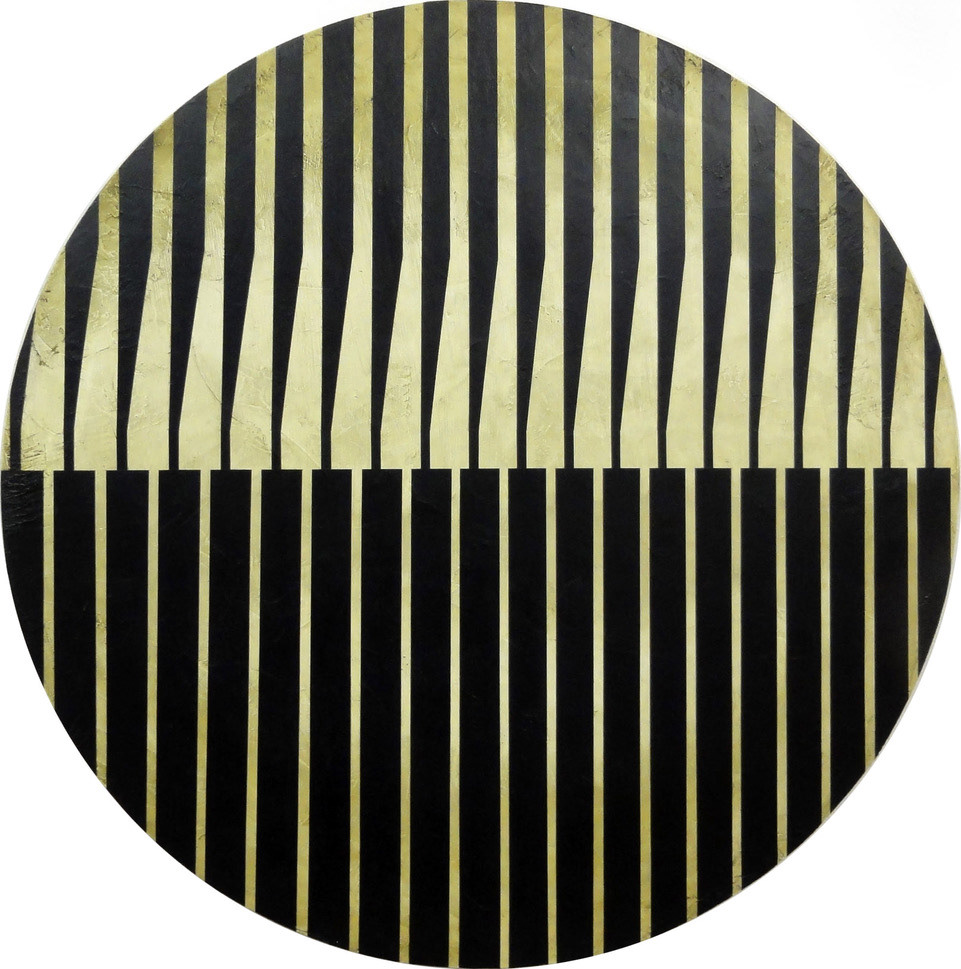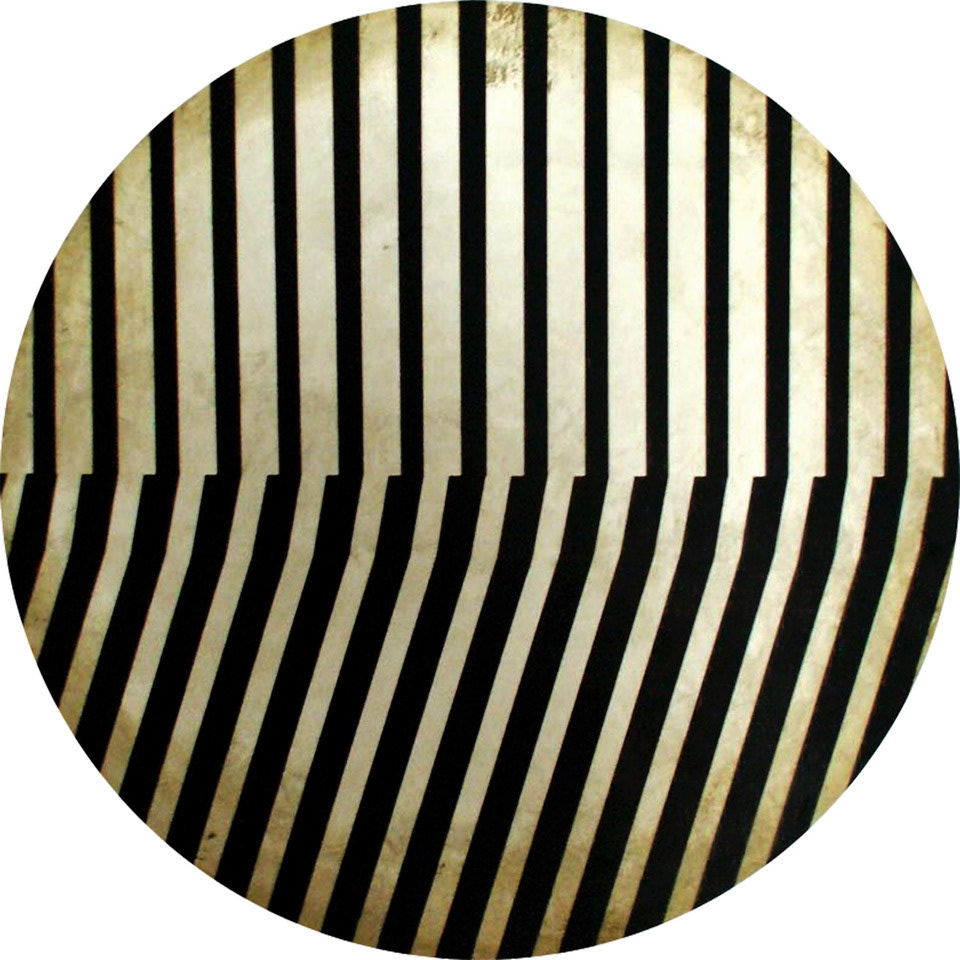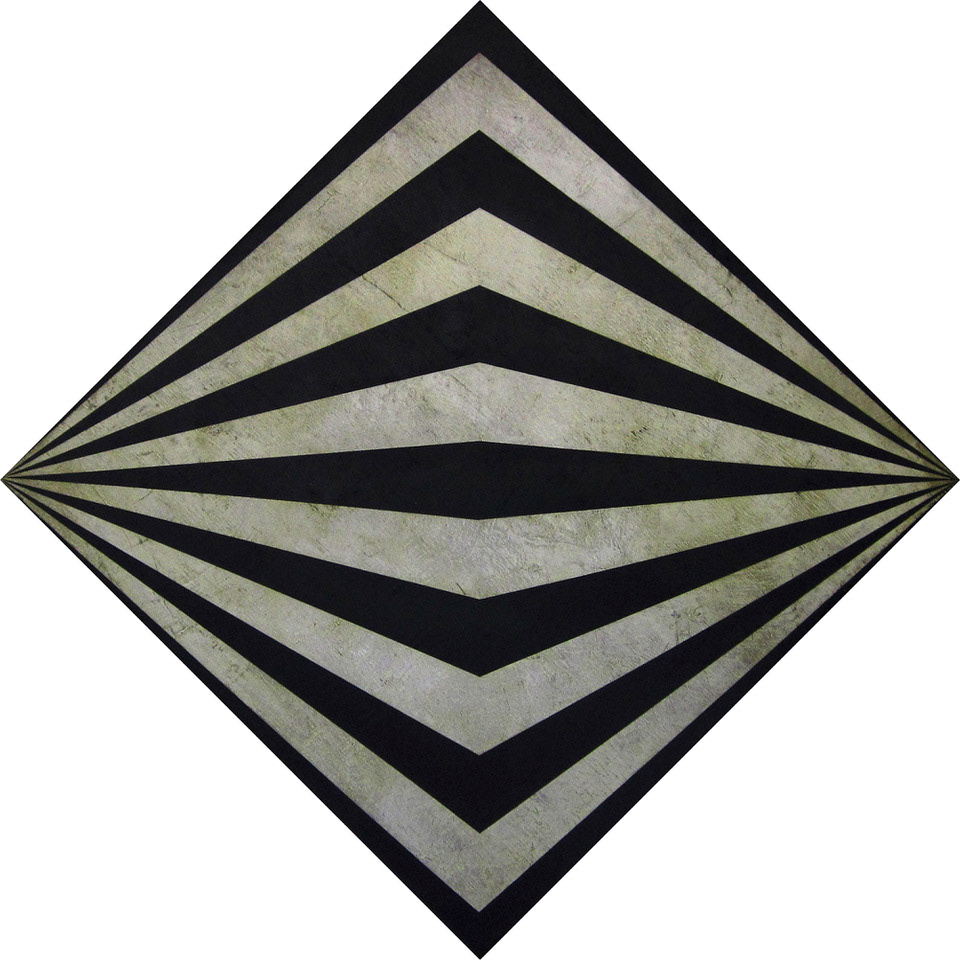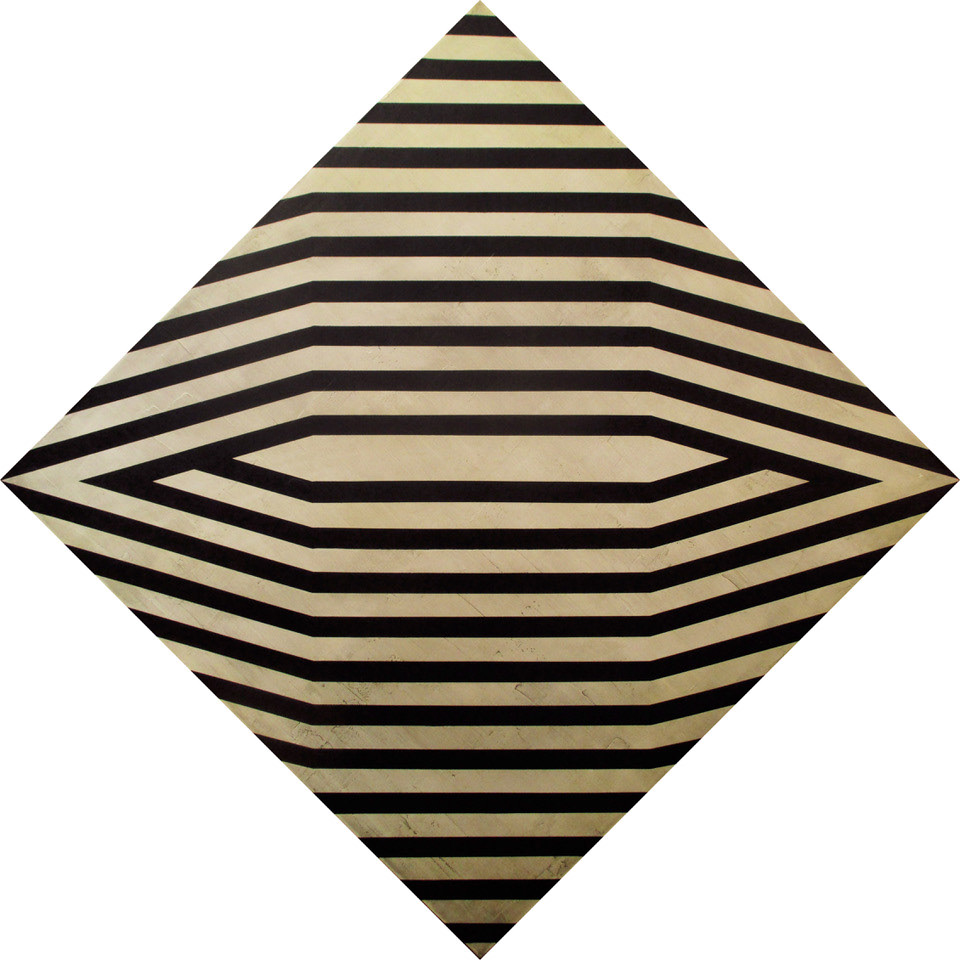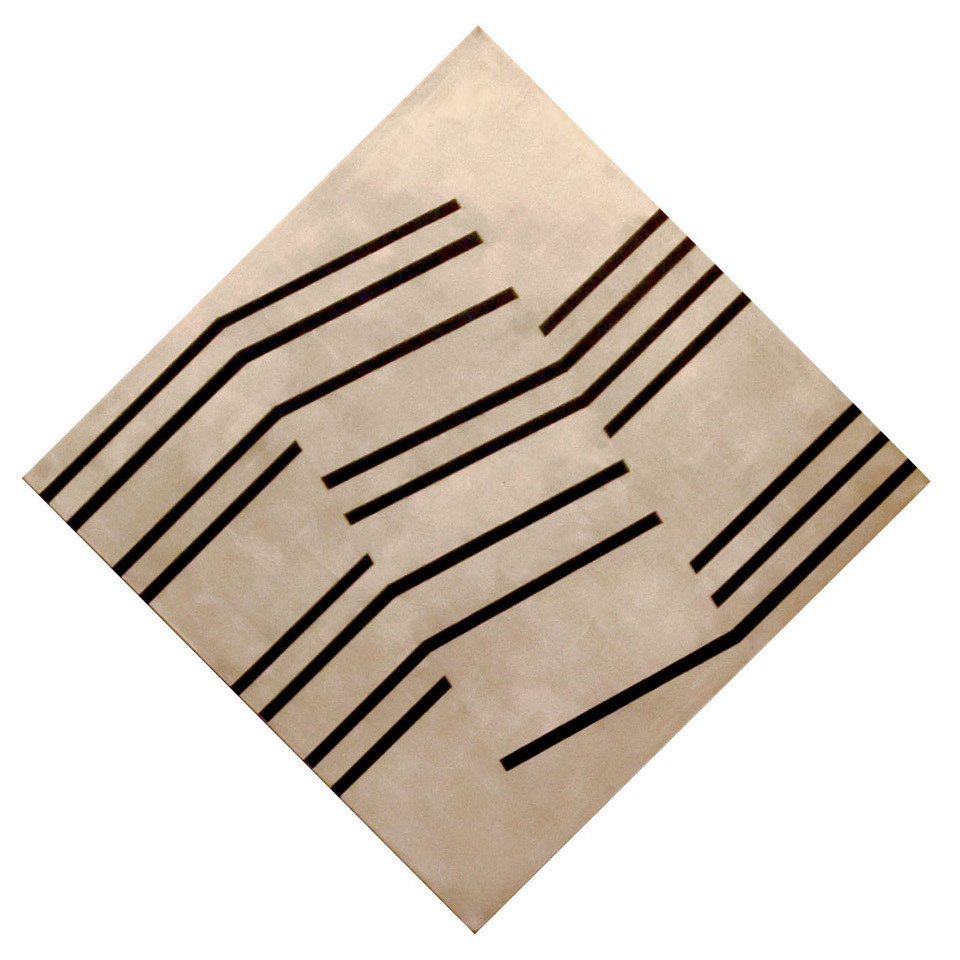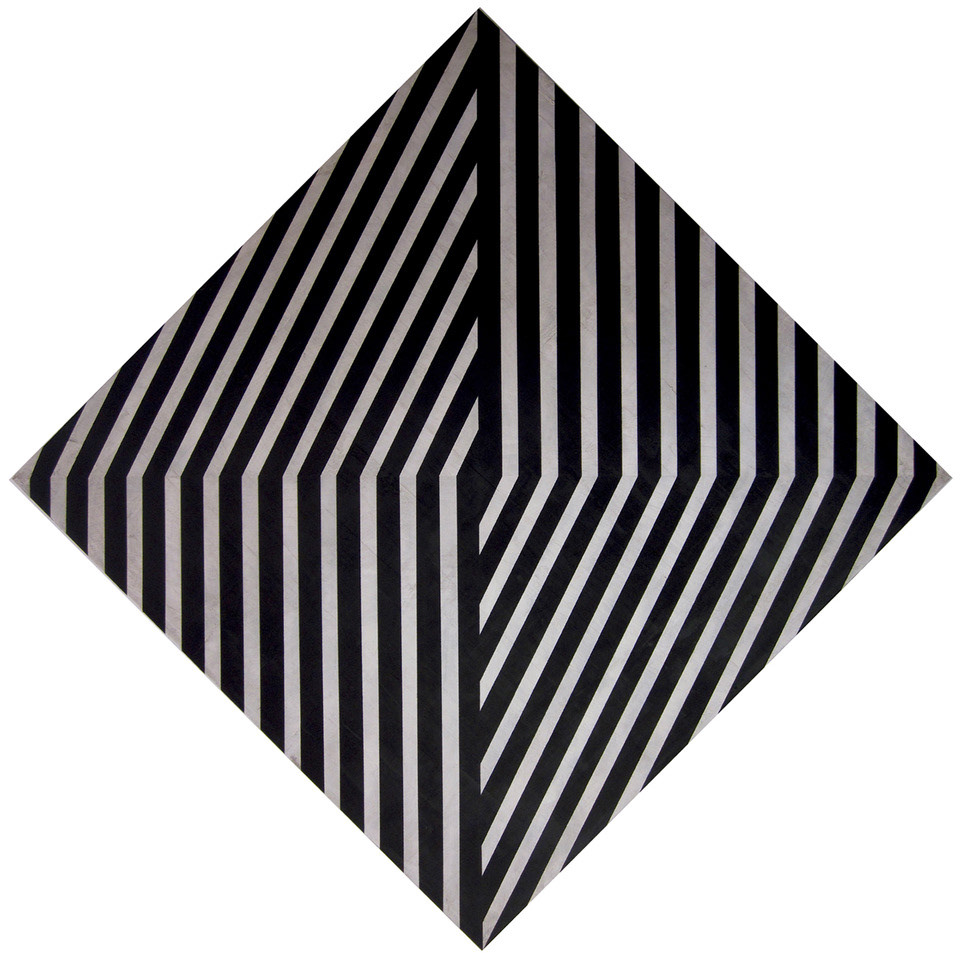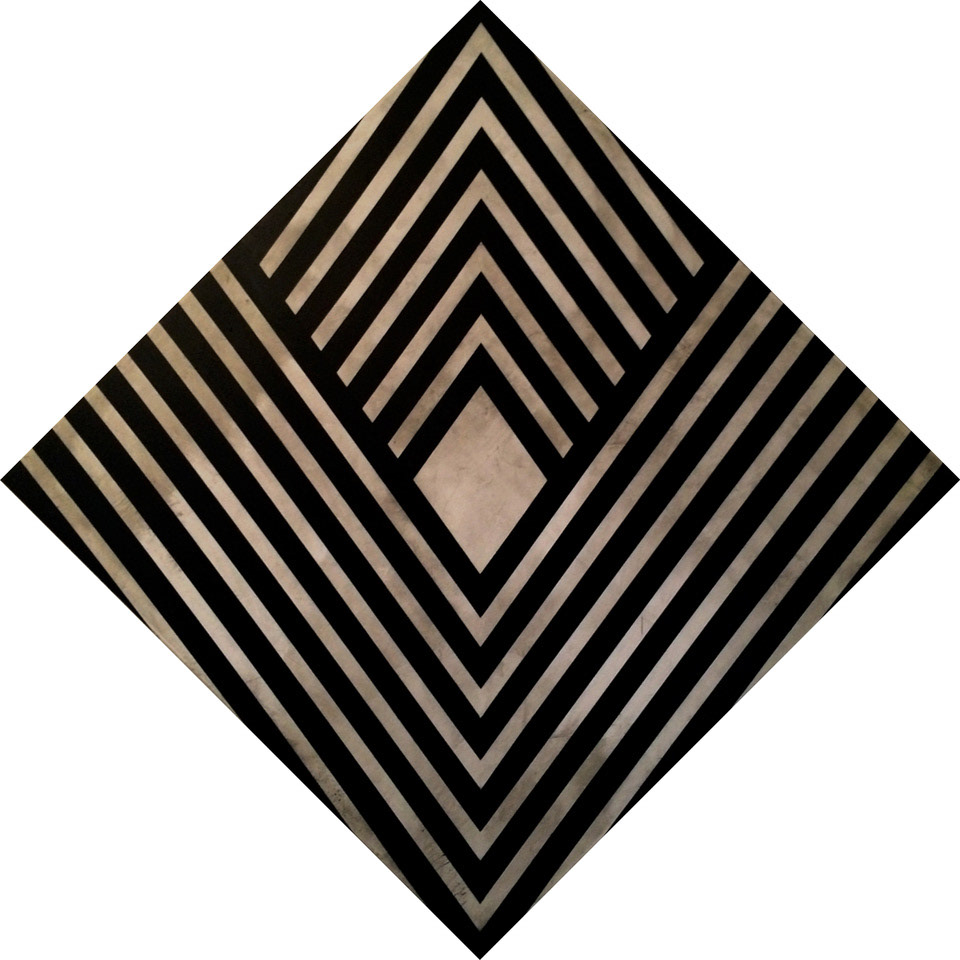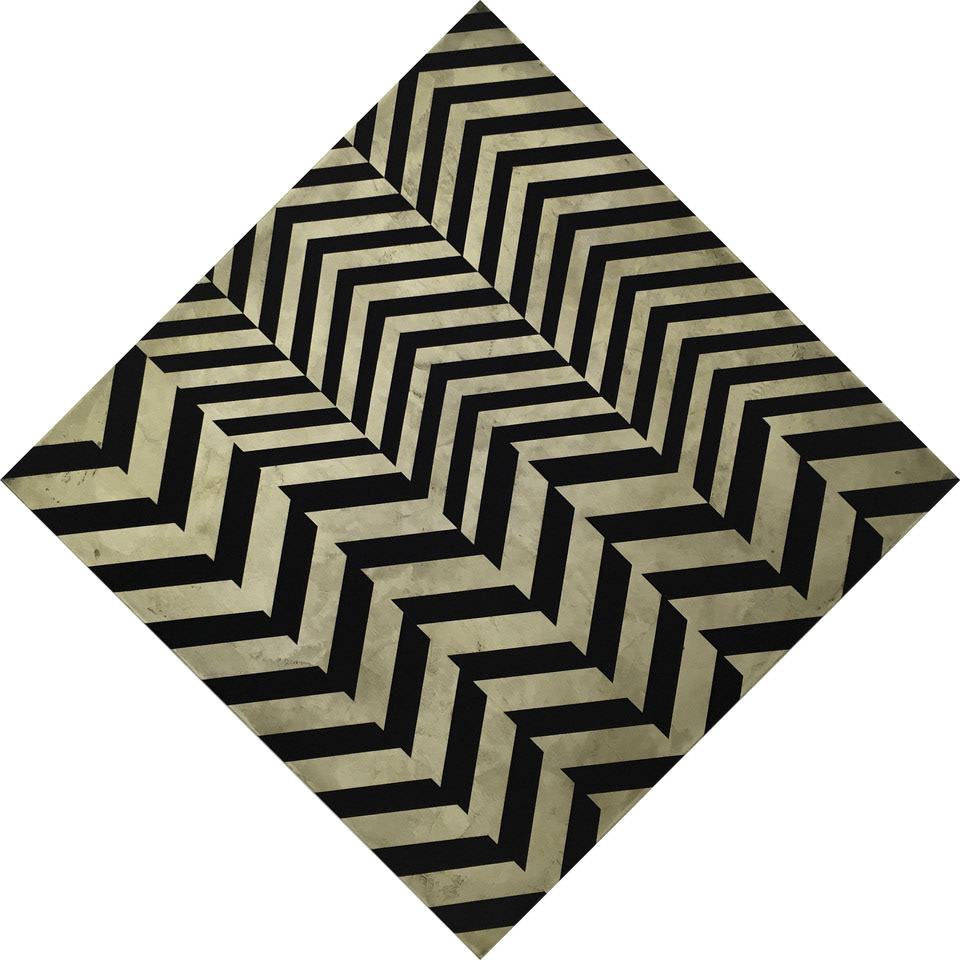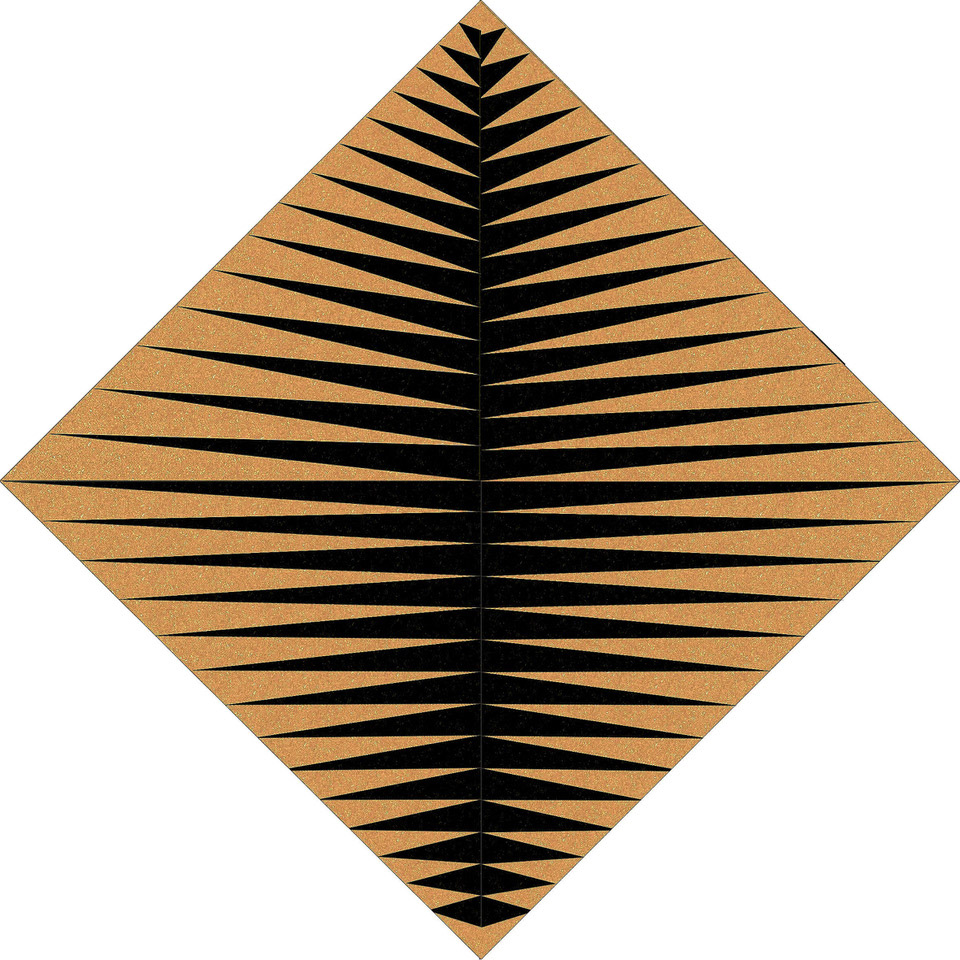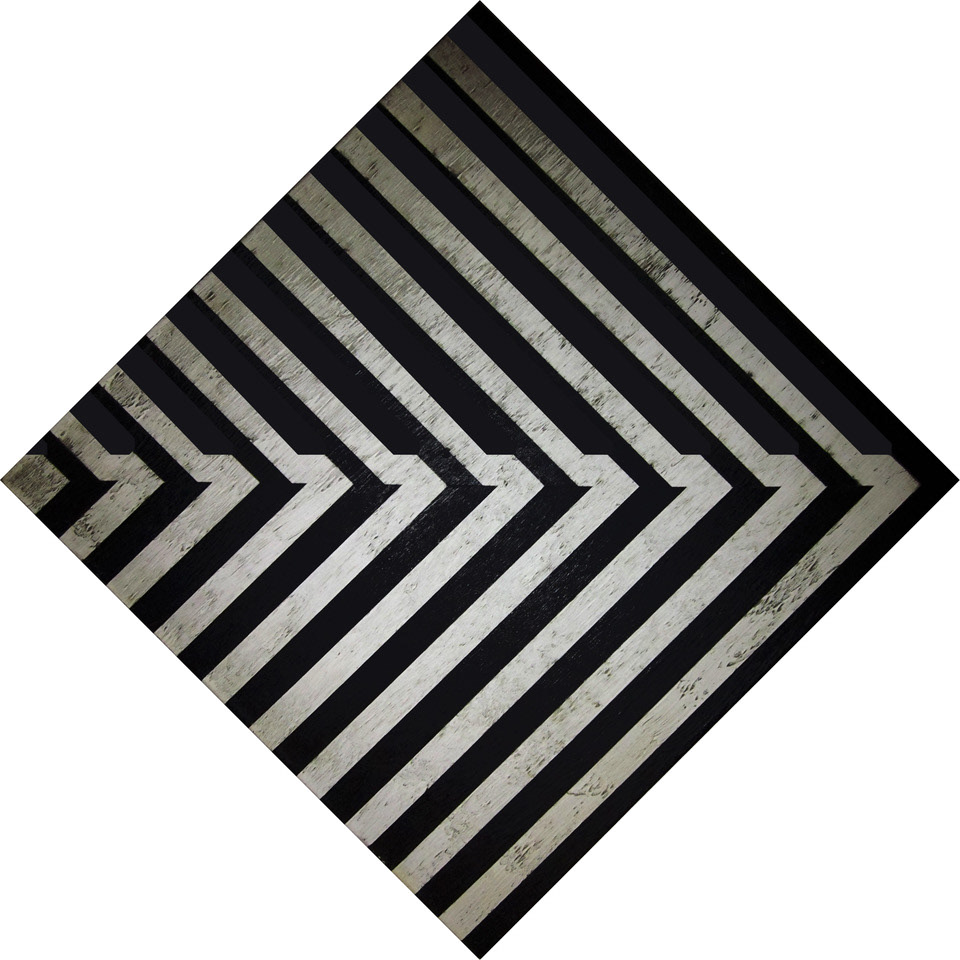In the background and foreground of endless order and structure in Dusa Jesih's paintings
Her painting is founded on merging geometrical shapes. Her paintings merge shapes, which all tend to unite while remaining equal. None of the parts is superior to any other part.
Geometrical shapes featuring on her canvases always tend to merge and co-exist rather than oppose one another. This tendency can be usually observed in the middle of the pictures where the shapes are completely autonomous and irregular.
Jesih's works are characterised by strings and repetitive patterns of oblong rectangular shapes. Some of them look like lines, which creates the effect of dynamism and transition beyond the surface of the painting.
Darker and nearly black shapes, which are usually rectangular and extremely oblong, always linger in the middle of the paintings. Their arrangement and form force them to extend to the left and to the right. And this endless continuation is a metaphor for every single work of Dusa Jesih.
Everything extends outwards from the surface. What seems to be spreading out form the field of the painting into the apparent imaginary space is, in fact, infinite. That space is endless, eternally undone and boundless. The way lighter shapes are arranged gives the impression of slots that provide insight into the background of the image and the world beyond.
Darker shapes in the first layer direct our gaze to the second layer featuring seemingly lighter shapes, which are actually the basic surface of every single painting by Dusa Jesih.
In this way, they symbolise endlessness and eternity. The space opens up, expands and remains open to the gaze. With very few exceptions, the shape that touches the edge of the canvas on one end is never completely "visible" because it transcends it. However, the shapes bordering it gradually melt the predominance and supremacy of the painting, which is only partially limited by the surfaces of the geometrical shapes.
As for the colours, they reflect the fundamental experience and sensation in the moment of painting. Curator Milos Basin, Bezigrad Gallery, 2016
Dusa Jesih, Between the lines, Academy of fine arts Ljubljana | Presern Award 2014
Dusa Jesih, Between the lines, Academy of fine arts Ljubljana | Presern Award 2014
*Prešeren Award and Prešeren Fund Award is the highest award of the Republic of Slovenia for achievements in the field of art.
The first prizes were awarded in 1947, on the day of cultural holiday. Awards were a law adopted in 1955, named after France Prešeren. Already in 1956, the law specifically defined scientific fields, the biggest change was adopted in 1961. Since than the awards have been intended only for work of art, but are divided on the Prešeren Award and Prešeren Fund Award. The number of awards has changed until the adoption of the bill at the end of 1981. At that time, the number of awards is limited to a maximum of three and a maximum of ten Prešeren Fund Awards. The amendments of 1991, the number of awards further decreased by a maximum of two Prešeren Award and a maximum of six awards Prešenovega Fund. Prešeren Award annually awarded the Faculty and the Academy of Arts, State University of Ljubljana. These awards are called student Prešeren Award and the University Prešeren Award, granted they are the best students, both in the field of art as a science.
Prešernove nagrade in nagrade Prešernovega sklada so najvišja priznanja Republike Slovenije za dosežke na področju umetnosti.
Prve nagrade so bile podeljene leta 1947, na dan kulturnega praznika. Nagrade so bile z zakonom, sprejetim leta 1955, poimenovane po Francetu Prešernu. Že leta 1956 je zakon natančneje opredelil znanstvena področja, največja sprememba pa je bila sprejeta leta 1961. Nagrade so od tedaj namenjene samo še umetniškim delom, razdeljene pa so na Prešernove nagrade in nagrade Prešernovega sklada. Število nagrad se je spreminjalo vse do sprejetja zakona konec leta 1981. Tedaj je bilo število nagrad omejeno na največ tri Prešernove in največ deset nagrad Sklada. Zakonska sprememba iz leta 1991 je število nagrad še bolj zmanjšala, in sicer na največ dve Prešernovi nagradi oziroma največ šest nagrad Prešenovega sklada. Prešernove nagrade vsako leto podeljujejo tudi fakulete in umetniške akademije, članice Univerze v Ljubljani. Te nagrade se imenujejo študentske Prešernove nagrade in univerzitetne Prešernove nagrade, podeljene pa so najboljšim študentom, tako na področju umetnosti kot znanosti. Dekan Akademije za likovno umetnost in oblikovanje (ALUO) izr. prof. Boštjan Botas Kenda je slovesno podelil šest Prešernovih nagrad, deset nagrad ALUO in dvanajst priznanj ALUO za leto 2014. Konec januarja je na Univerzi v Ljubljani potekala slovesna podelitev diplomskih listin ter nagrad in priznanj študentom ALUO. Kot je v svojem nagovoru poudaril dekan, je ponosen na to, da je tudi v letu 2014 veliko študentov, ki so si s svojim delom prislužili nagrade in priznanja, še posebej najvišjo nagrado, to je Prešernove nagrade. S tem želi ALUO spodbuditi kakovost znanstveno-raziskovalne in umetniške dejavnosti študentov.
Duša Jesih, 2013/2014 2. letnik magistrskega študijskega programa 2. stopnje Slikarstvo, mentor izr. prof. Zmago Lenardič
Dusa Jesih, Geomirije Group Exhibition, Art Factory Majsperk, 2015
ALUO TRANSFORM IN ART EDUCATION - 2014 | The Association of Visual Art Higher Education Institutions from Central and Southern Europe (Works on photo: Ana Legcevic, Dusa Jesih, Gasper Kunsic)
Dusa Jesih, Between the lines | Exhibition dedicated to the 70th anniversary of the Academy of Fine Arts and Design - ALUO LXX. Past, Present, Future
